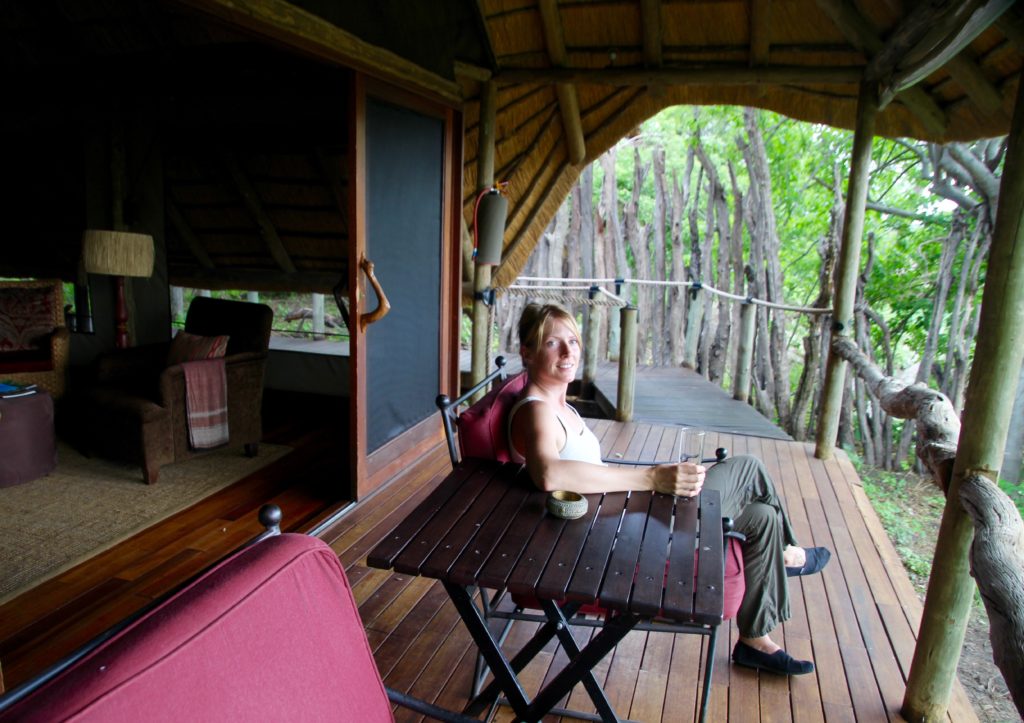
“Knock, knock, knock…”
“Helloooo…”
“Good morniiiiing….”
…It’s dark…
I sleepily open my eyes to the 5a.m. wake up call.
“Good morning!”
“We are awake. Thank you!”
In thirty minutes the sun would rise, which gave us just enough time to roll out of bed, throw on clothes, grab our bags, and slug back a cup of coffee and light breakfast before heading into the vehicle for our morning game drive.
In the wilderness, if you want to have the best opportunity for animal sightings, you wake up when the animals wake up . And sunrise is actually one of my favorite times of the day. It always feels like you are in on a secret the rest of the world doesn’t yet know about.
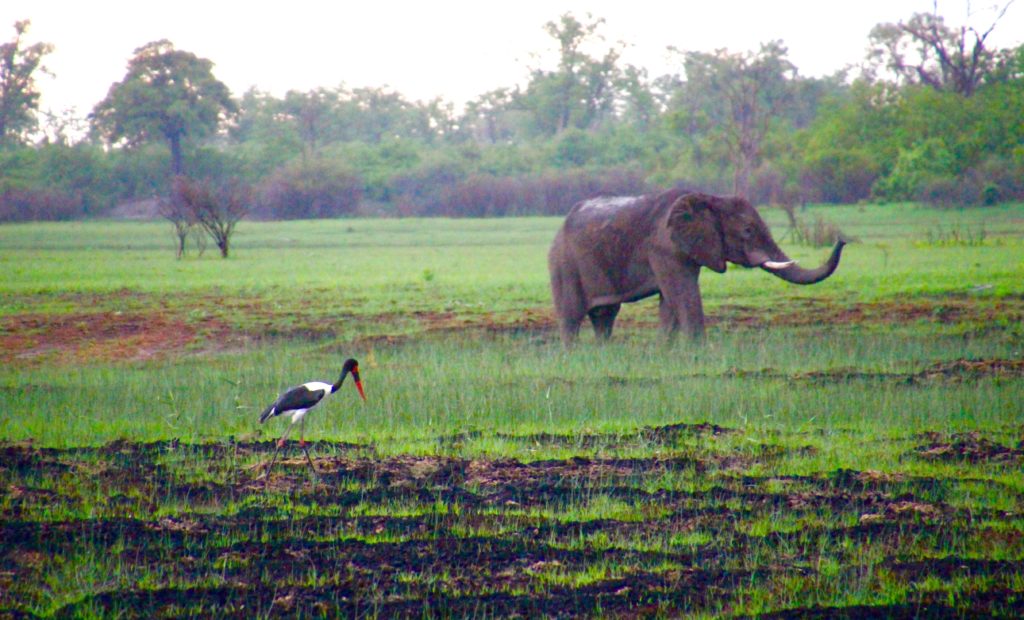
Elephant and a saddle-billed stork
Four of us piled into the rover eager to start exploring: Our guide and driver, Tops, a lovely German/South African woman named Eva, and my mom and I.
There is never a real agenda when you are on safari. You go where the animal signs lead you.
Tops began the morning meandering along the main roads, keeping an opportunistic eye out for fresh animal tracks.
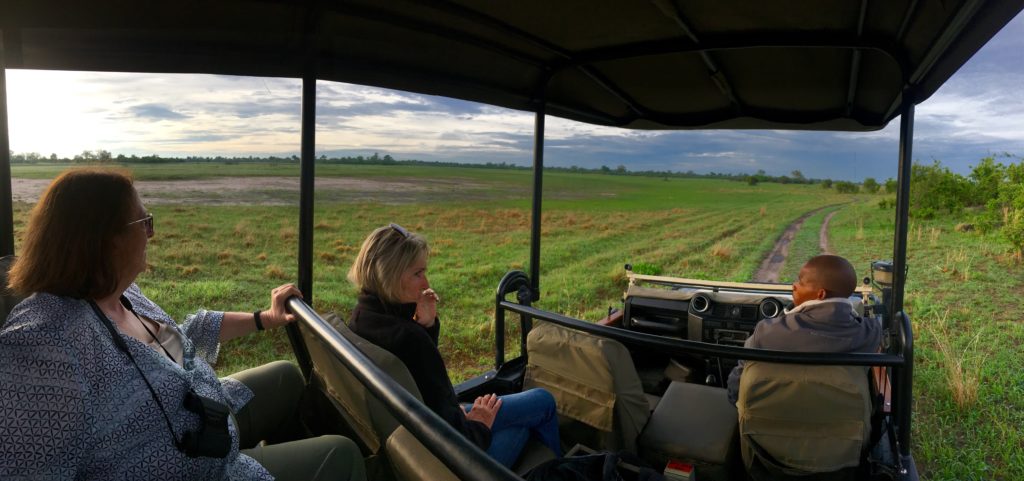
Even when we didn’t see big game, there were plenty of other animals and birds to keep us occupied. Botswana has 75 larger mammal species and 593 bird species have been recorded. Because of the Delta’s dynamic watery woodlands, amphibians are also abundant.
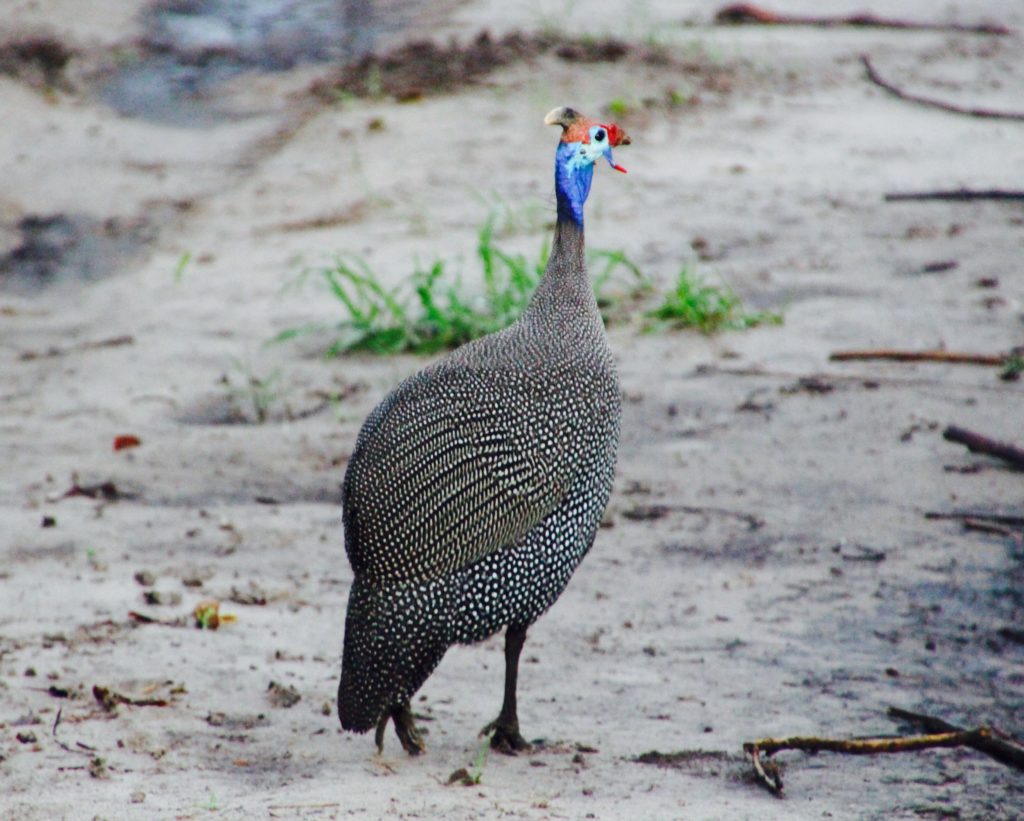
Helmeted Guinea fowl
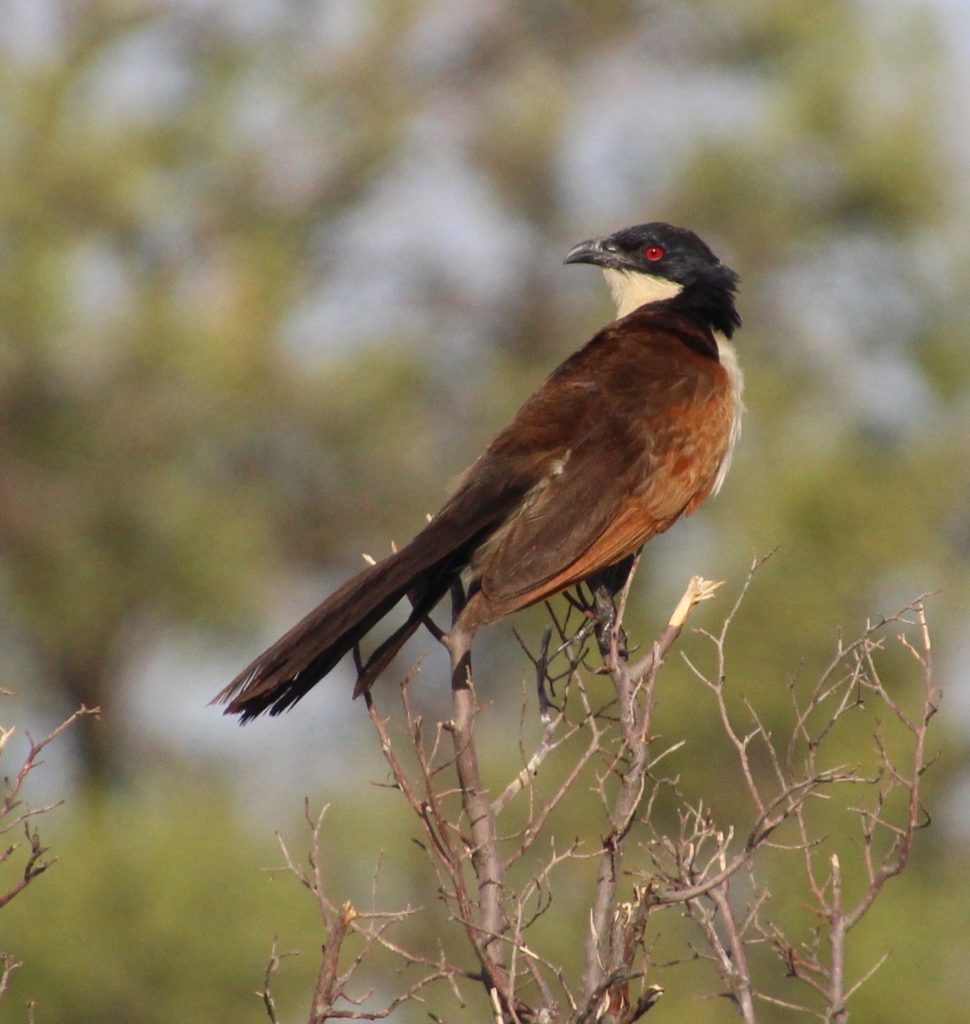
Coppery tailed coucal
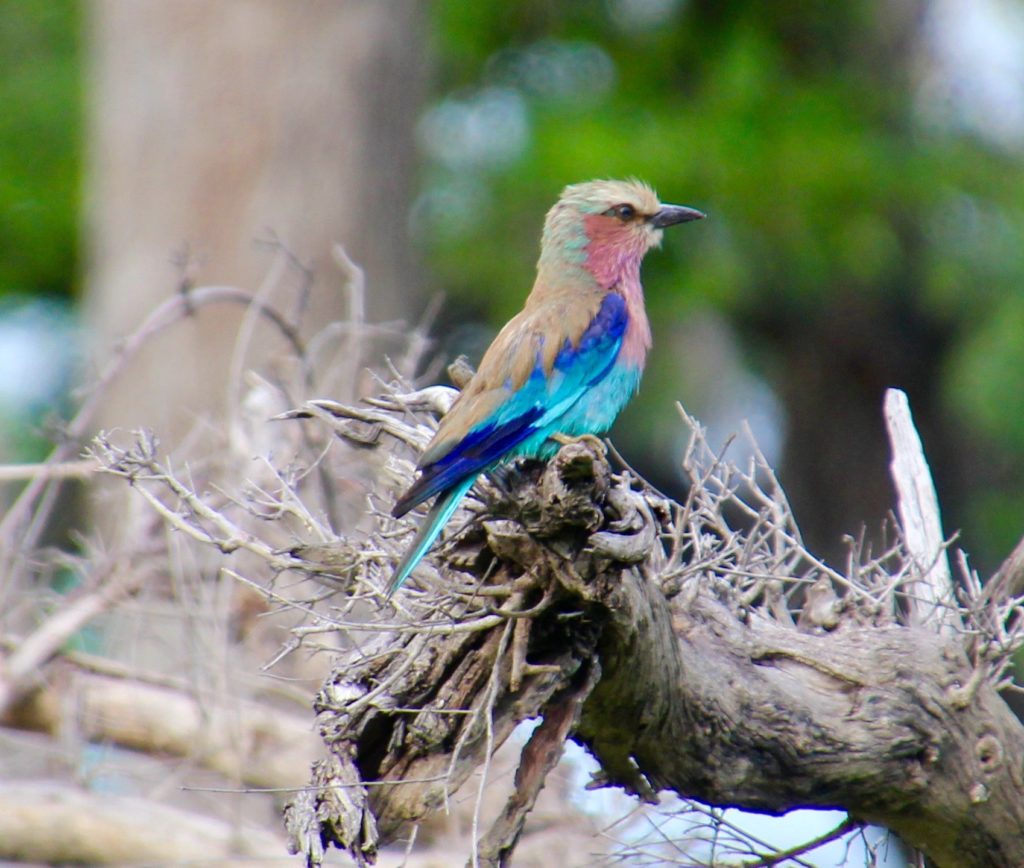
Lilac breasted roller. My favorite.
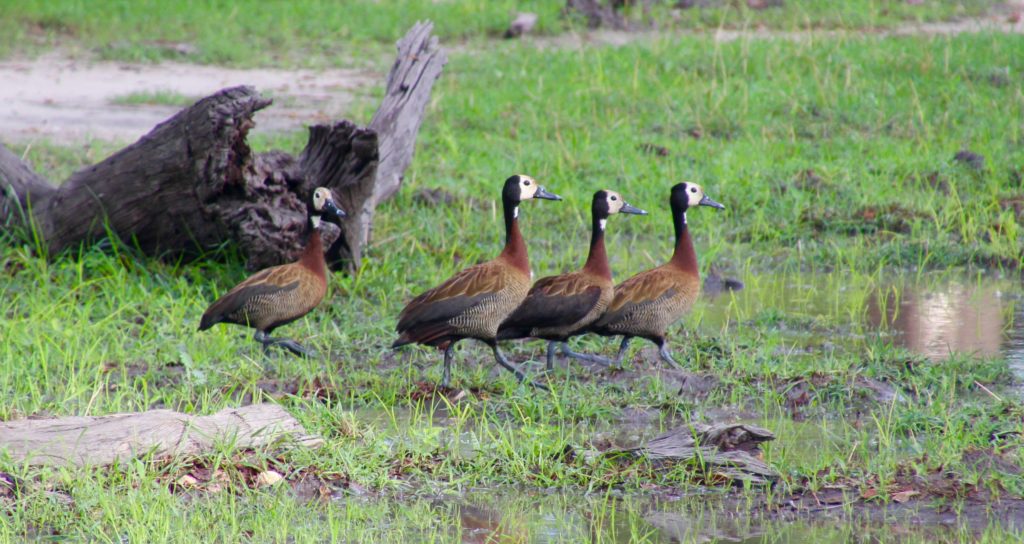
White faced whistling ducks
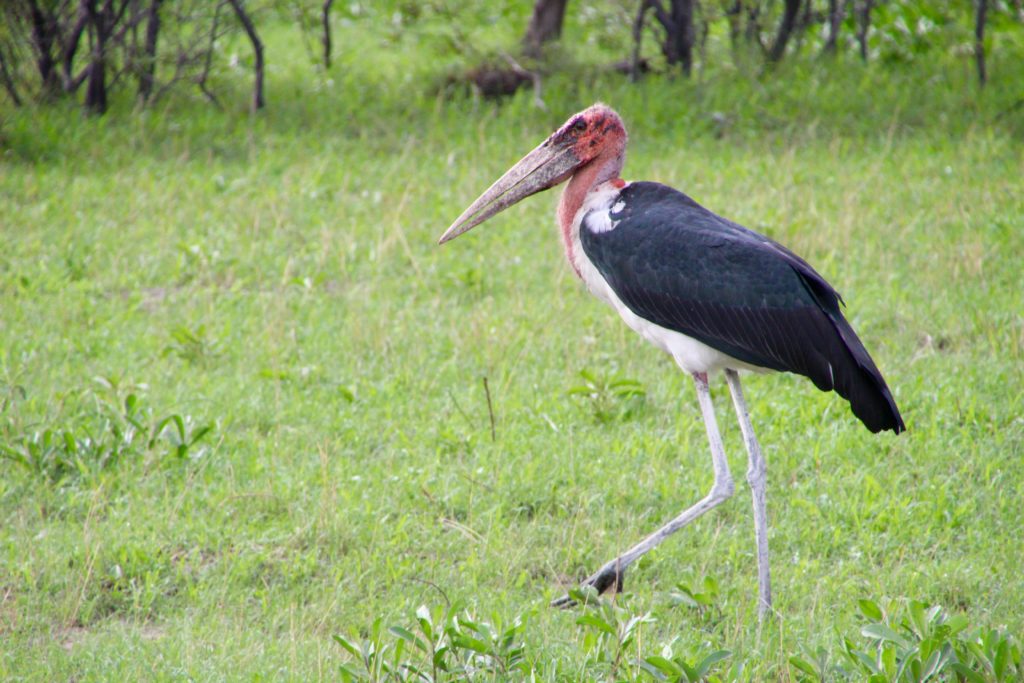
Marabou stork
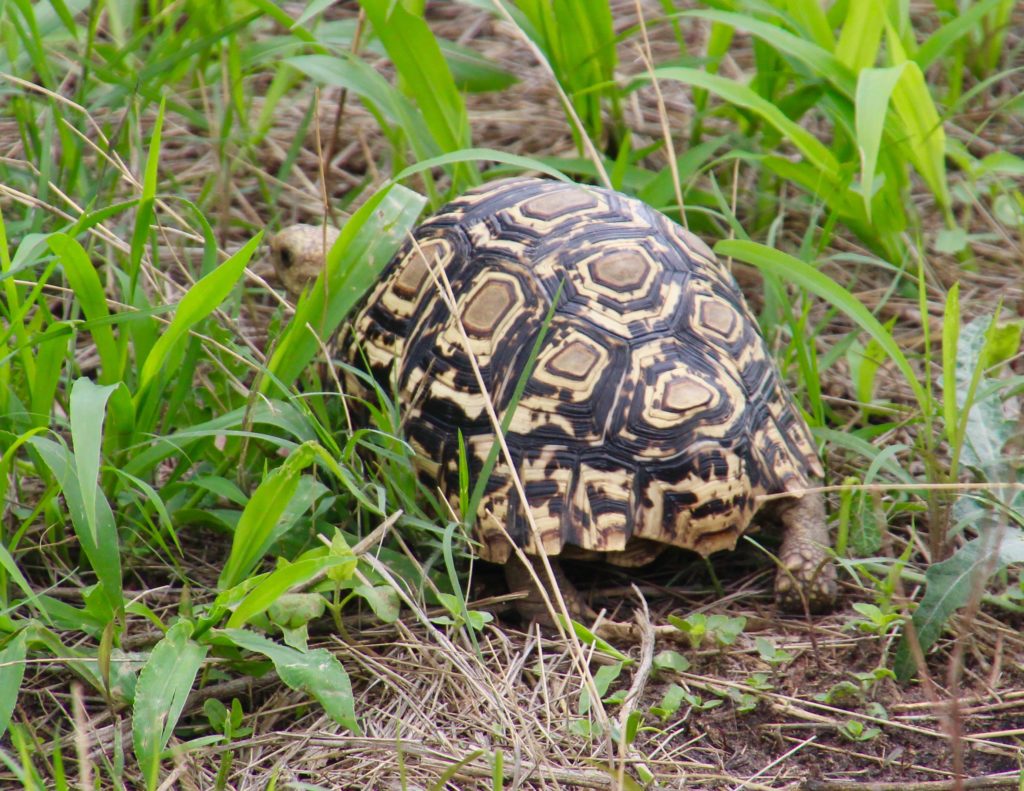
leopard tortoise
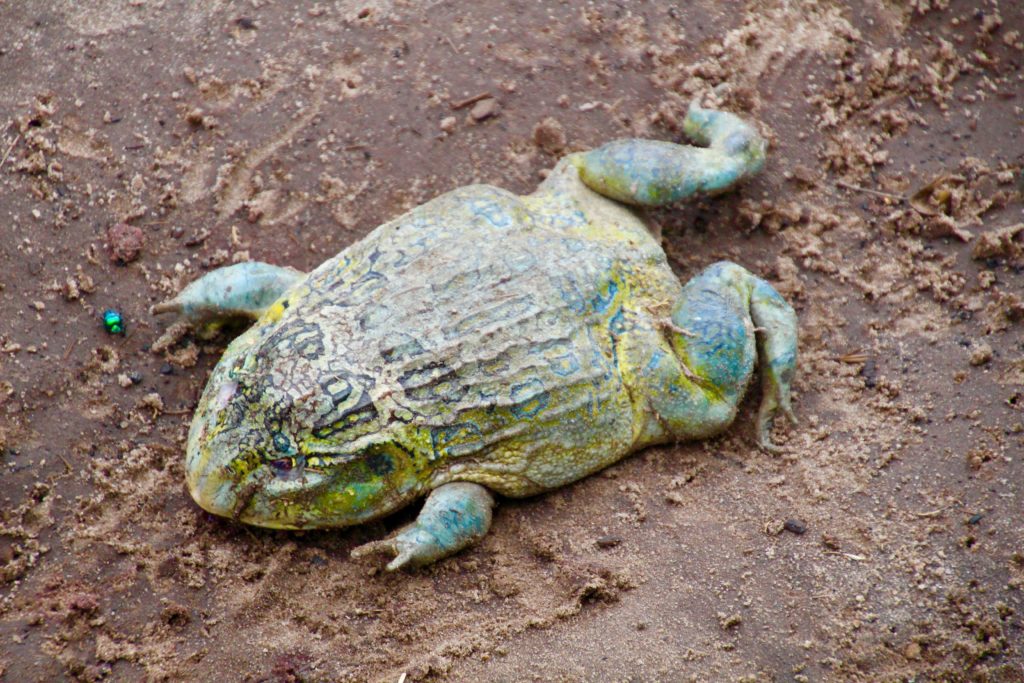
african bullfrog carcass
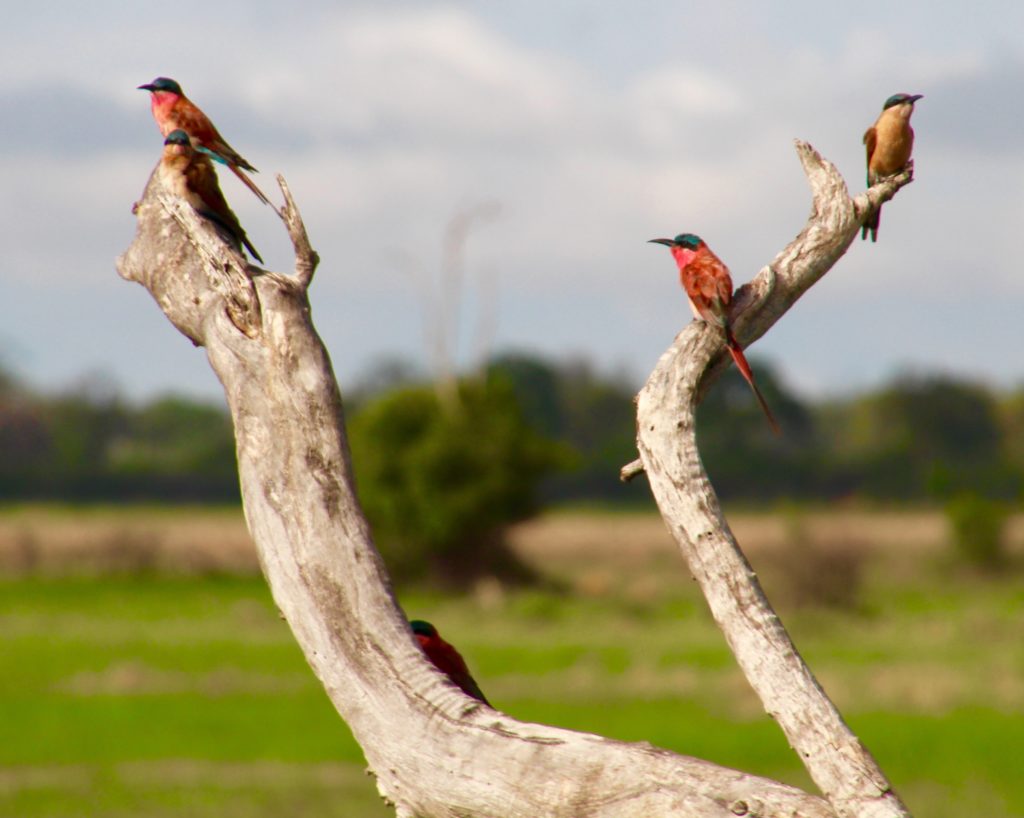
Southern carmine bee eater
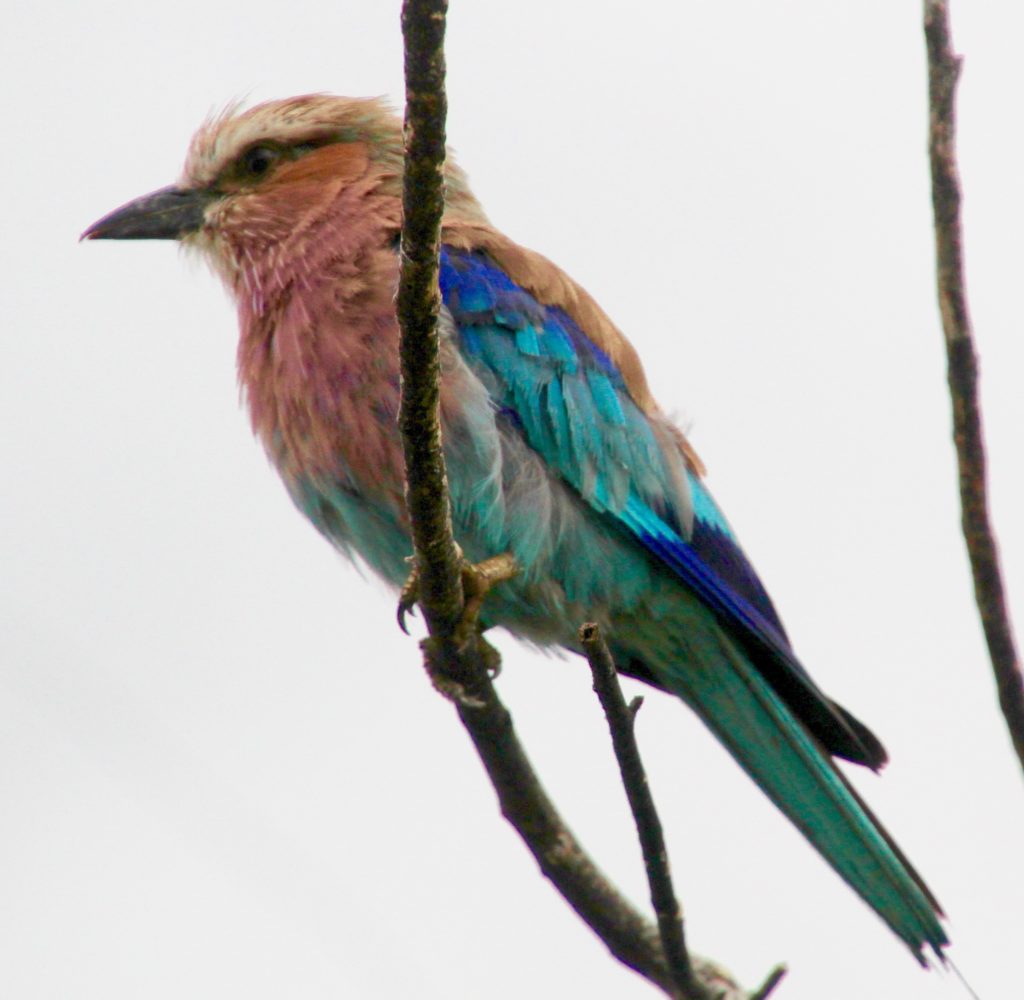
Another lilac breasted roller
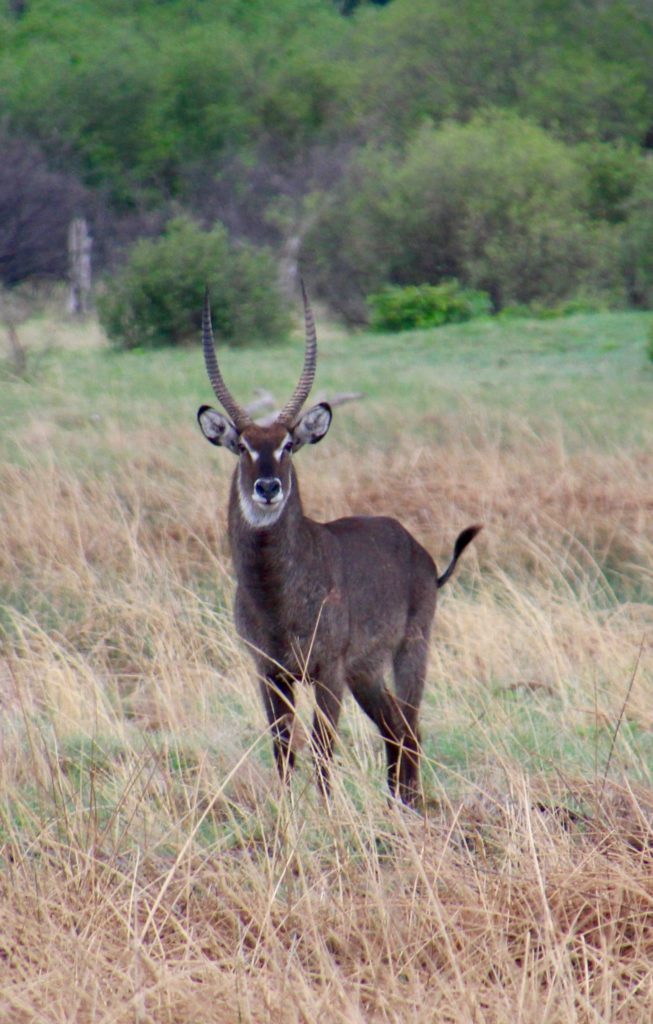
Sable antelope
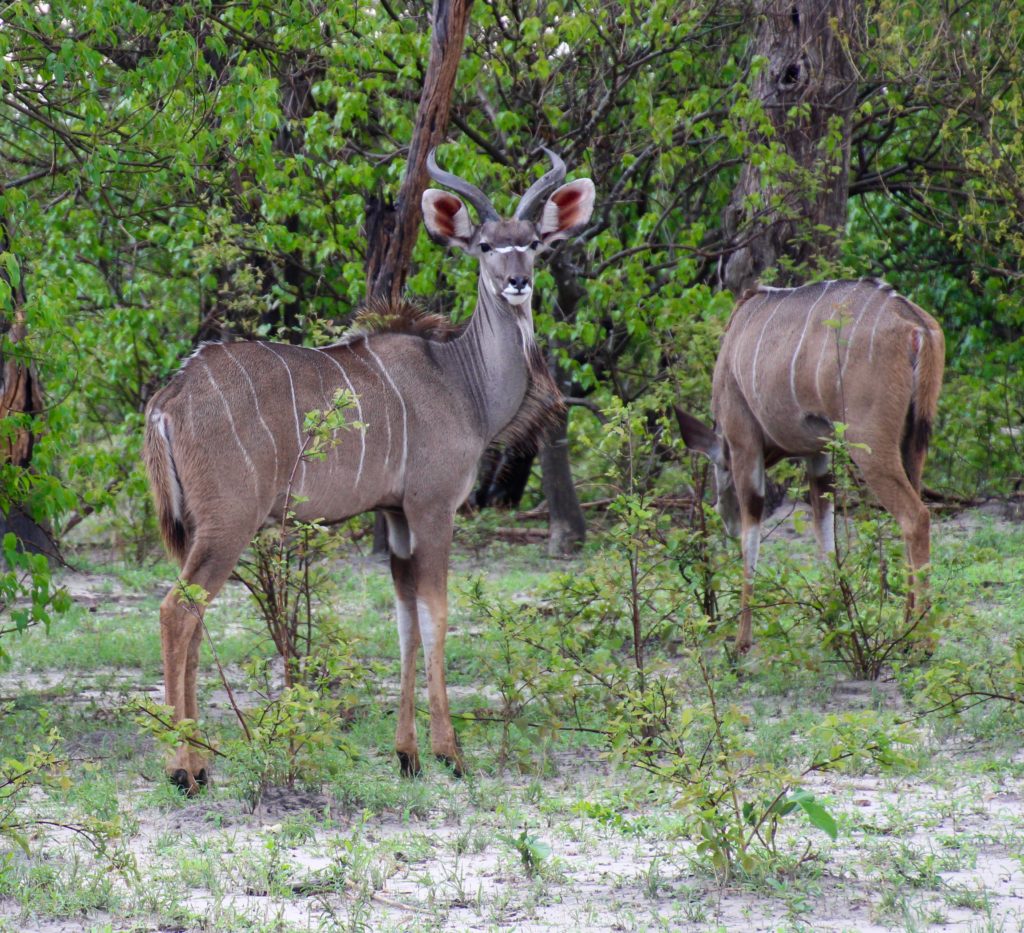
Kudu
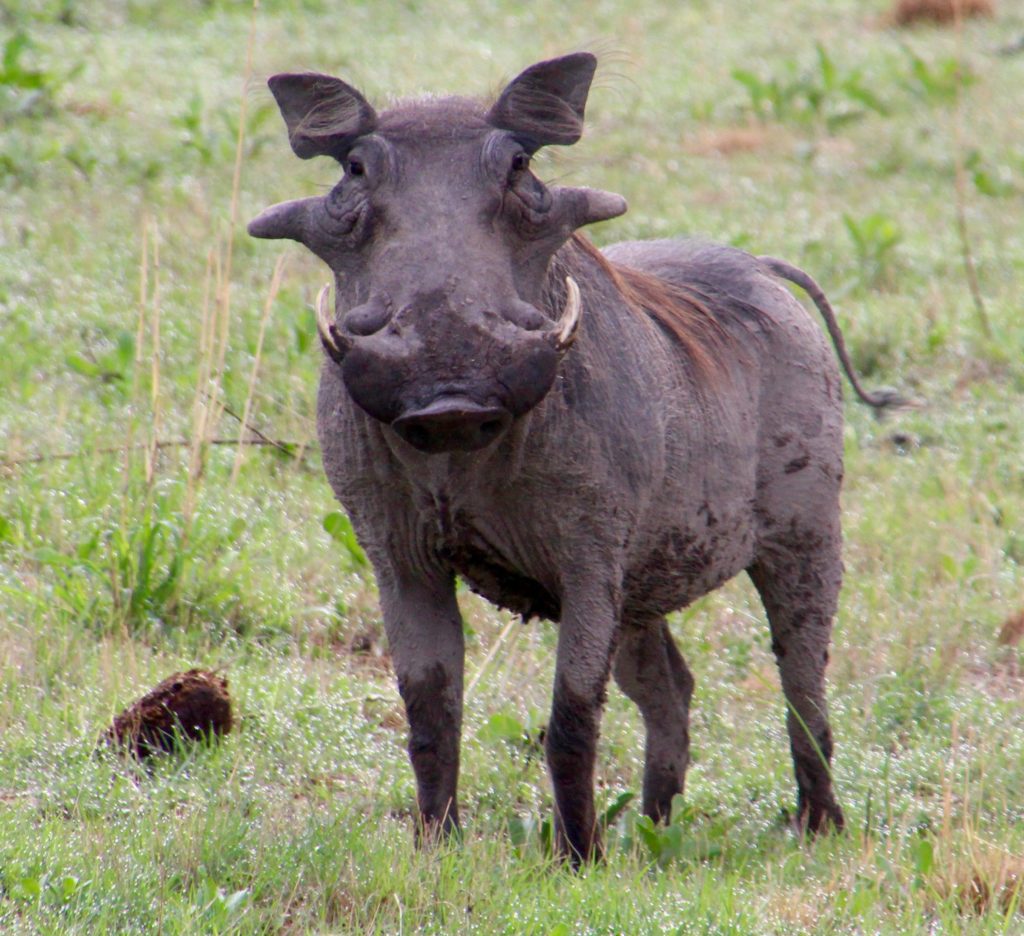
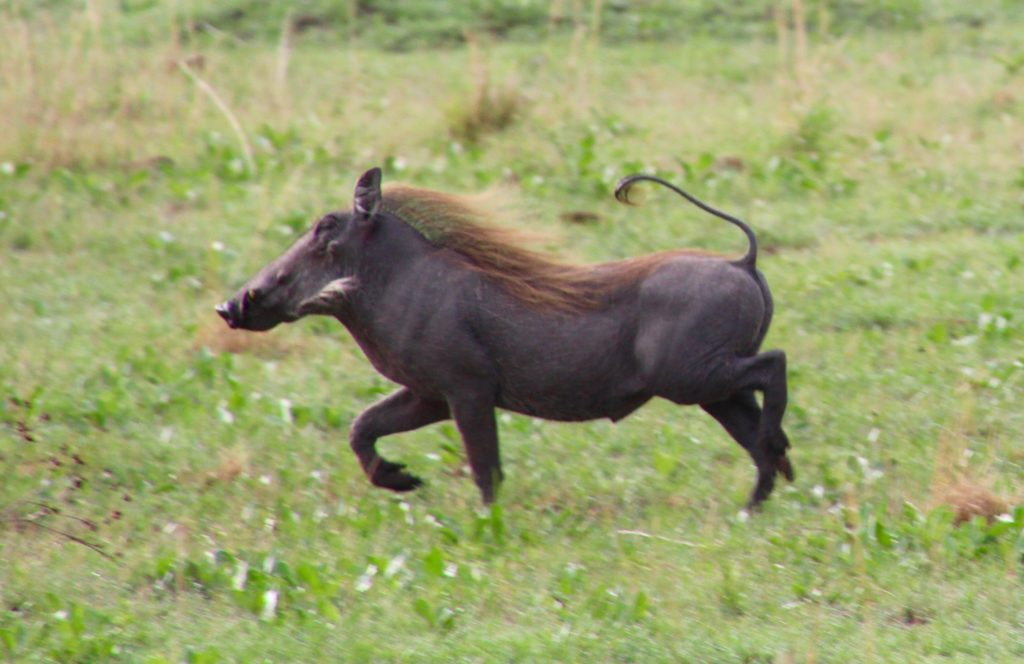
They joke that warthogs are part of Africa’s “Ugly Five”. A play on the sought after “Big Five” game animals: African lion, African elephant, Cape buffalo, African leopard, and rhinoceros. I found the warthogs to be endearing and my favorite site was them trotting off into the bush with their tails held high. A signal to other hogs to say, “Follow me if you want to live!”
Warthogs typically live in family groups of a female and her young. Female warthogs only have four teats, so litter sizes are usually confined to four young. Each piglet has its own teat and suckles exclusively from it. After about 4 months, the young switch to receiving most of their nourishment from grazing.
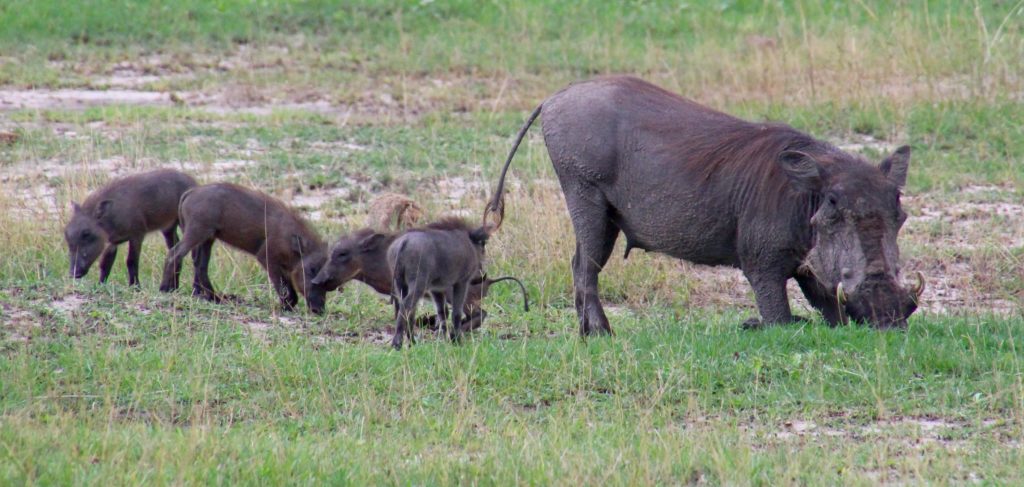
Mama warthog and piglets
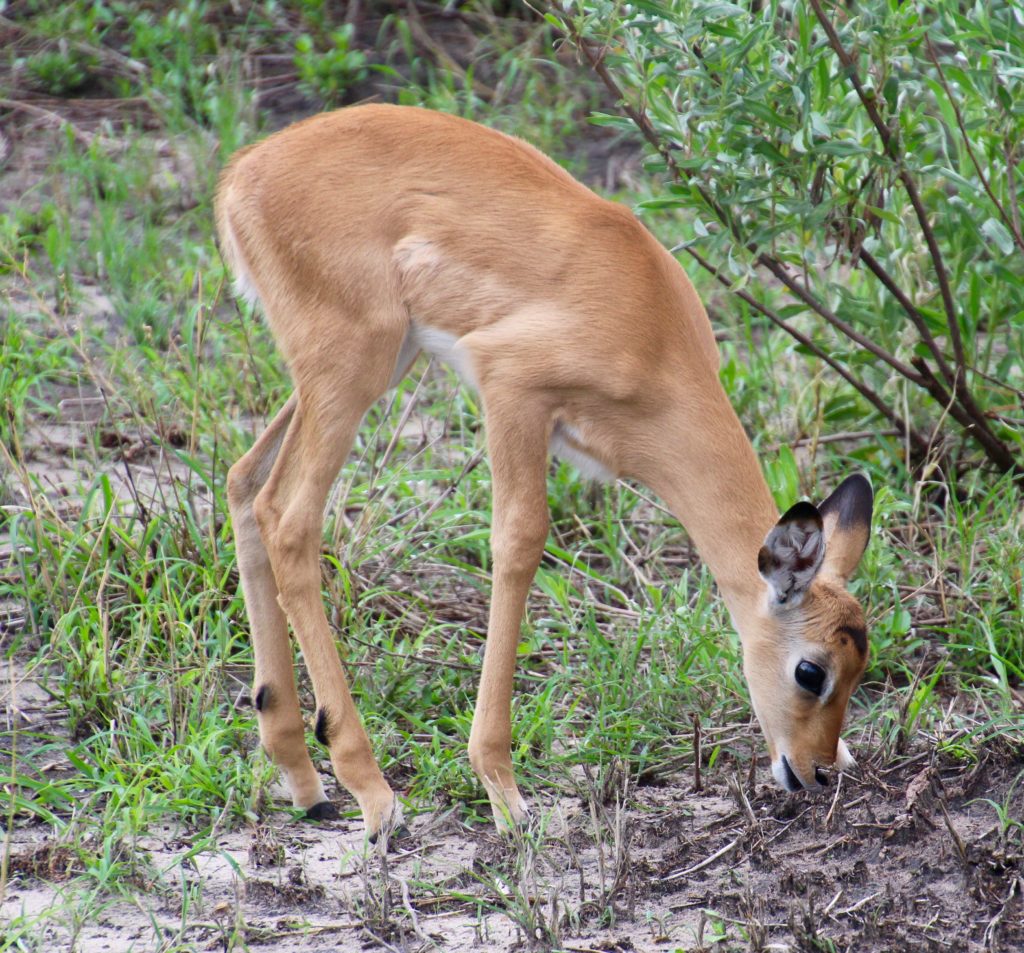
Baby impala
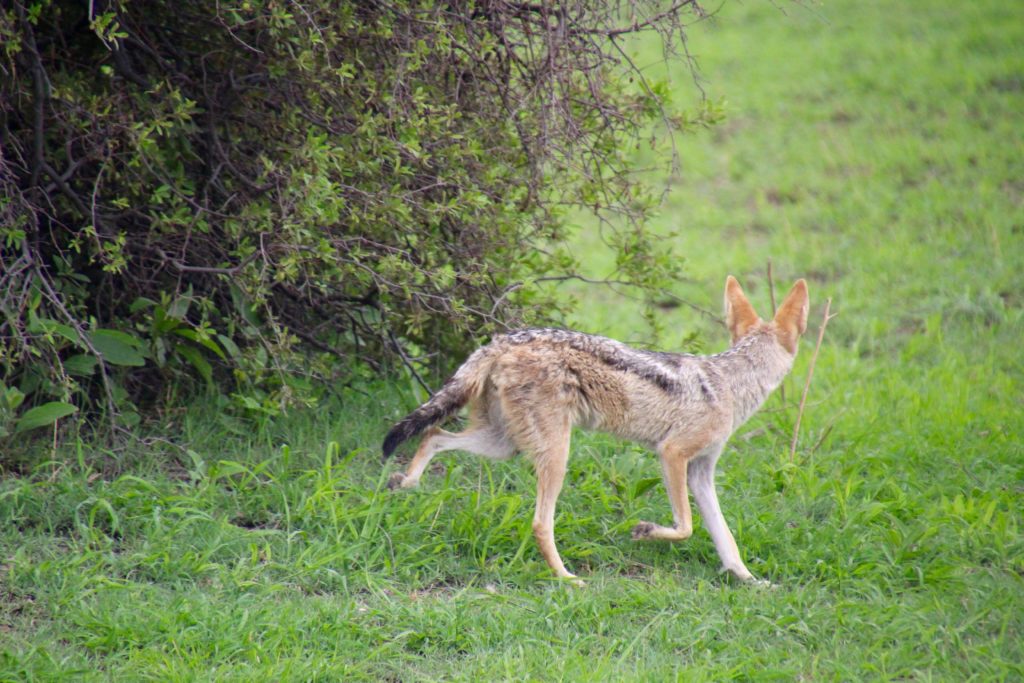
side striped jackal
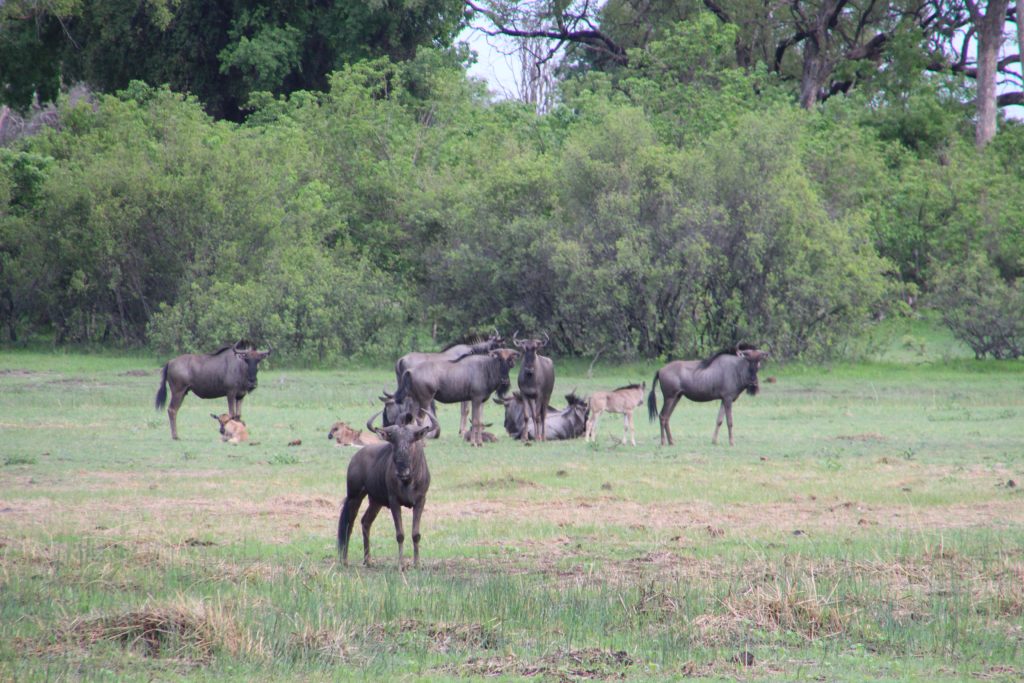
Blue Wildebeest
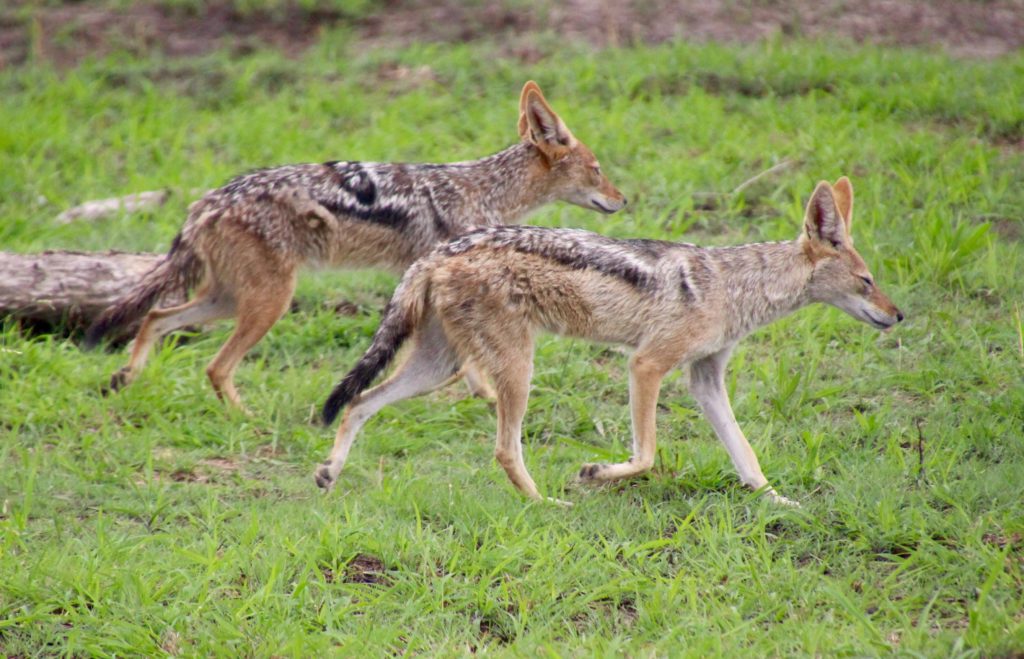
Pair of jackals
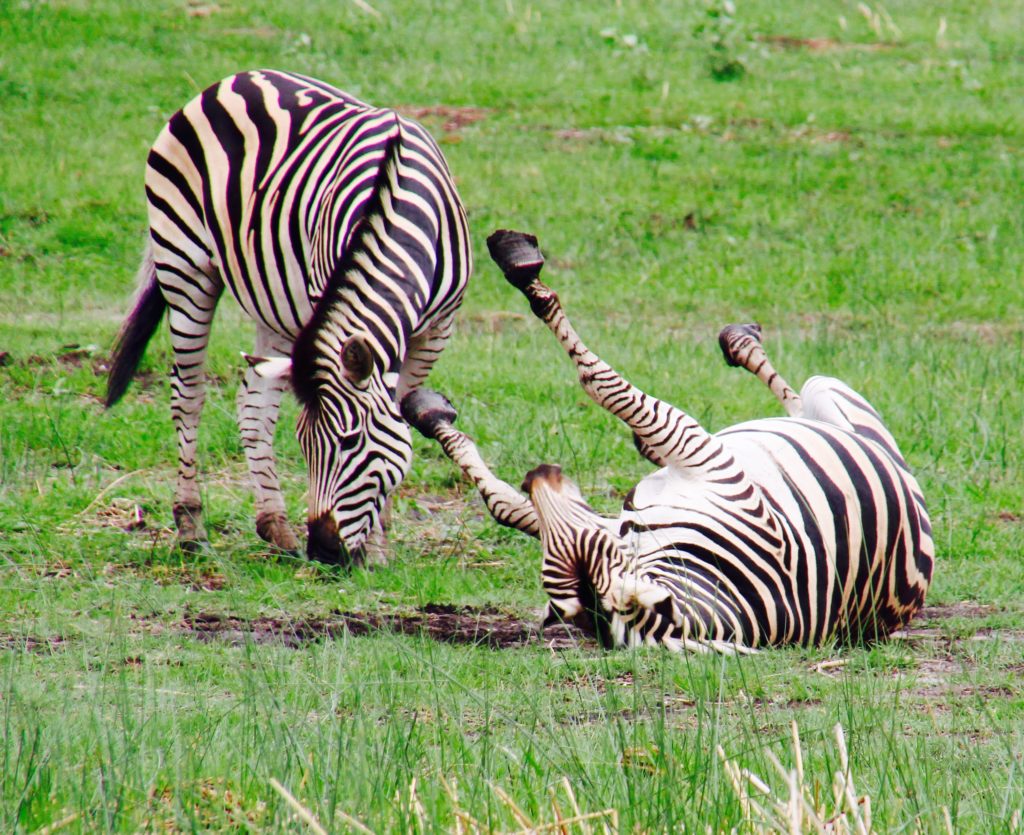
A playful zebra
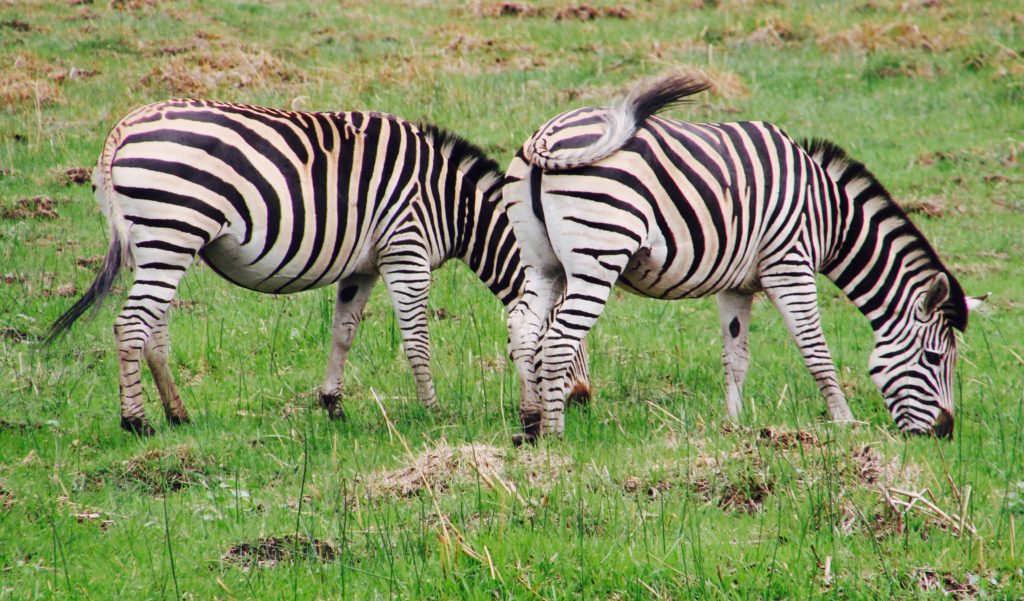
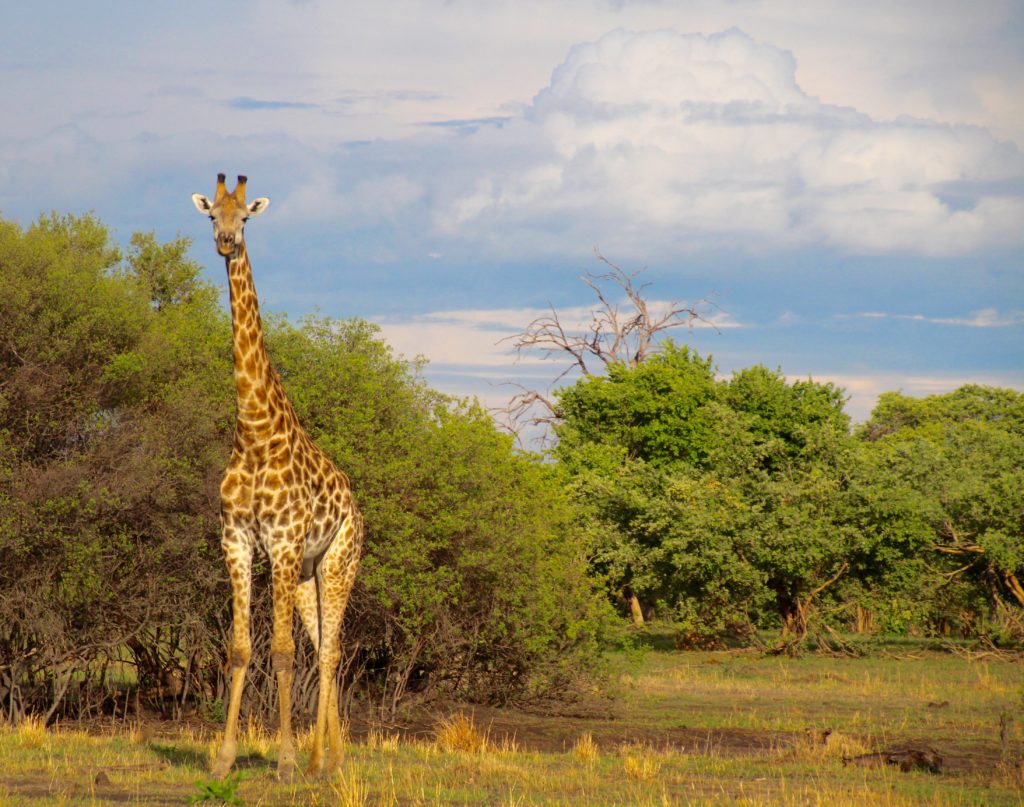
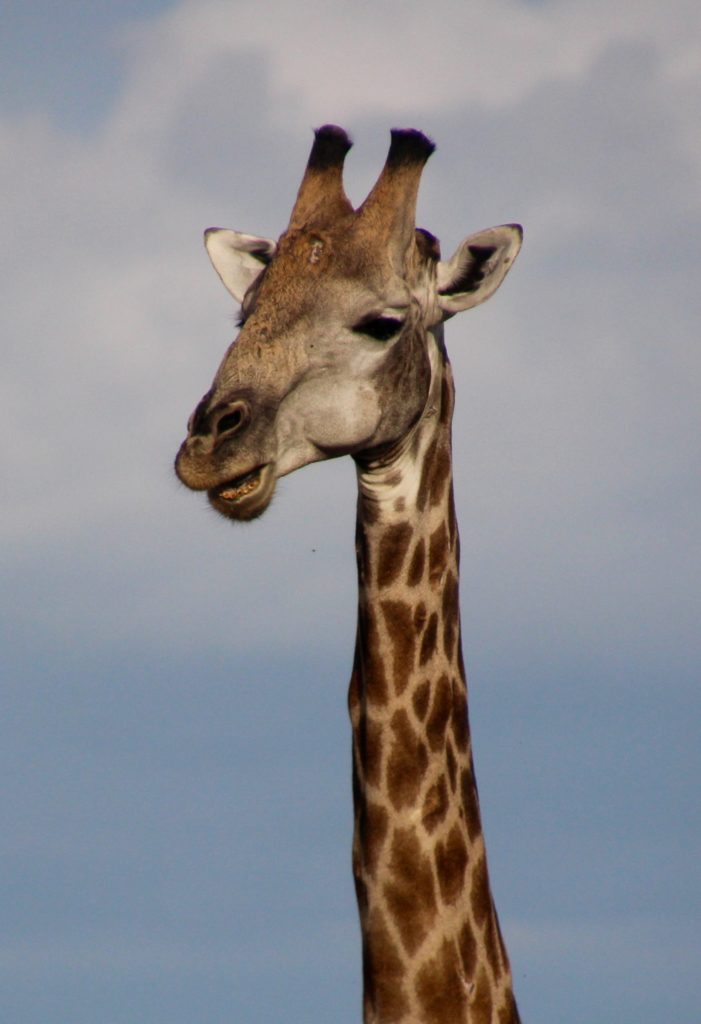 Giraffes are probably one of my favorite animals. They’re so tall and slow. If you’ve ever seen a giraffe running, you know what I mean. They’re operating on a different timeline and for good reason. They have some of the longest nerves around. The sciatic nerve, which runs down each of its legs, is several yards long, so responding to a stimuli actually takes longer.
Giraffes are probably one of my favorite animals. They’re so tall and slow. If you’ve ever seen a giraffe running, you know what I mean. They’re operating on a different timeline and for good reason. They have some of the longest nerves around. The sciatic nerve, which runs down each of its legs, is several yards long, so responding to a stimuli actually takes longer. 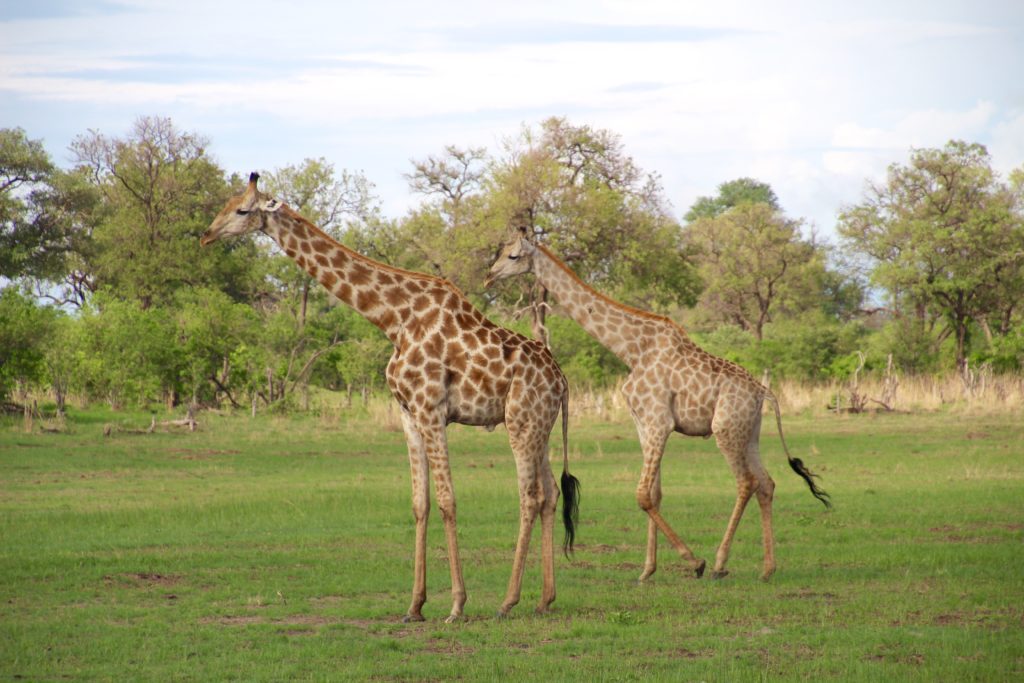
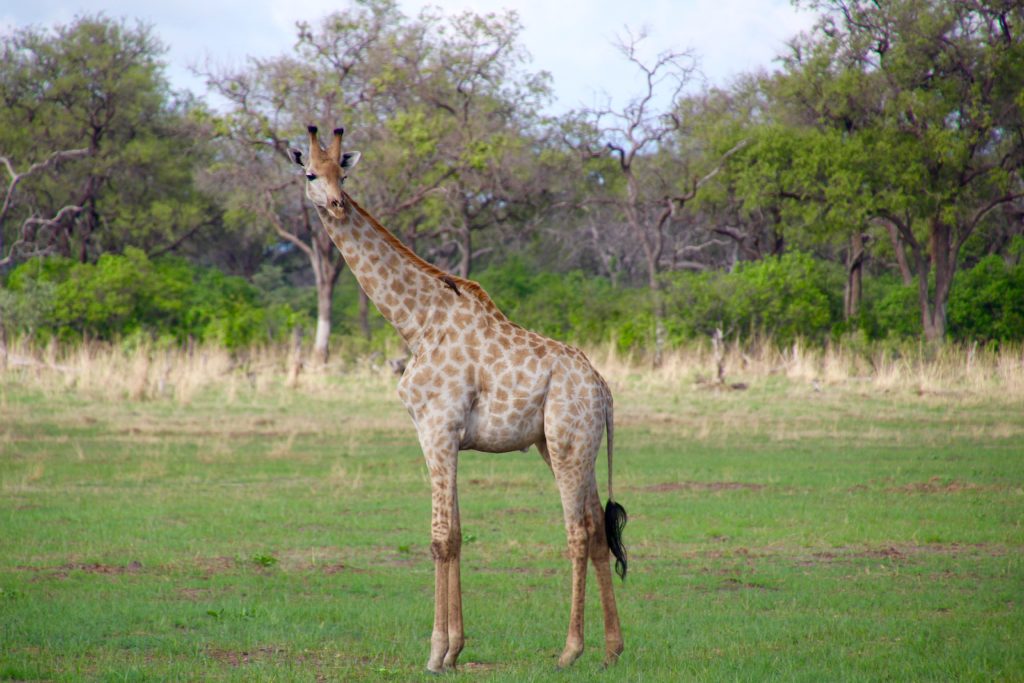
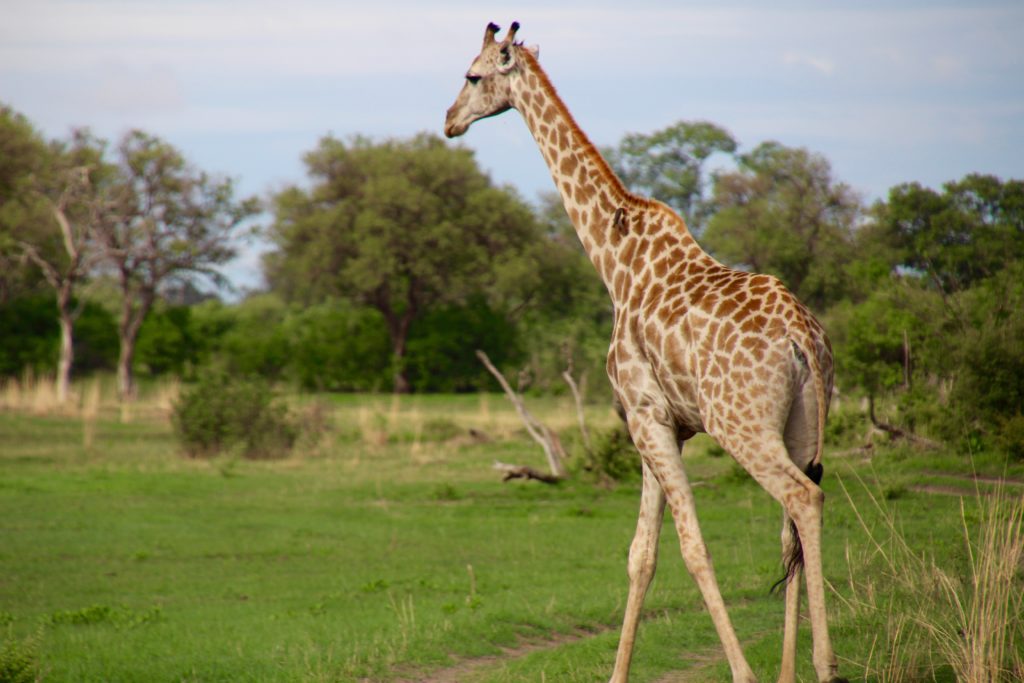
Wilderness Safari’s Savuti Camp is located in the Linyanti concession. This 125,000 hectare area is rich with mopane woodland, floodplains, and riparian forests. The year round water source from the Savute Channel attracts wildlife including herds of elephant that can reach very high densities in the drier winter months (July/August).
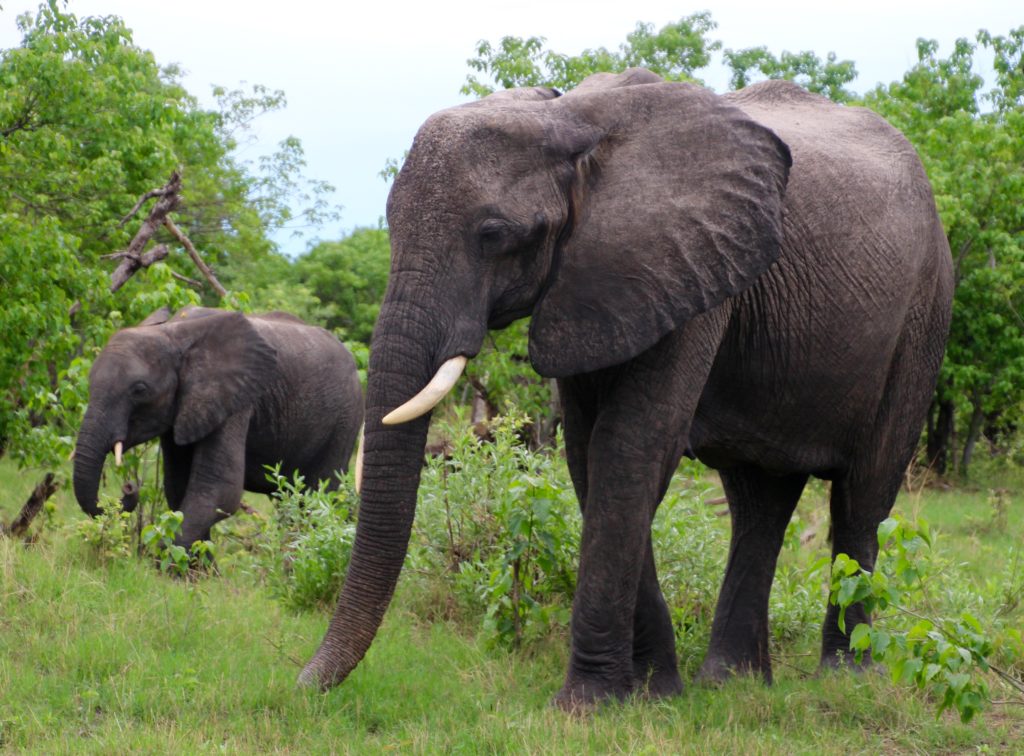
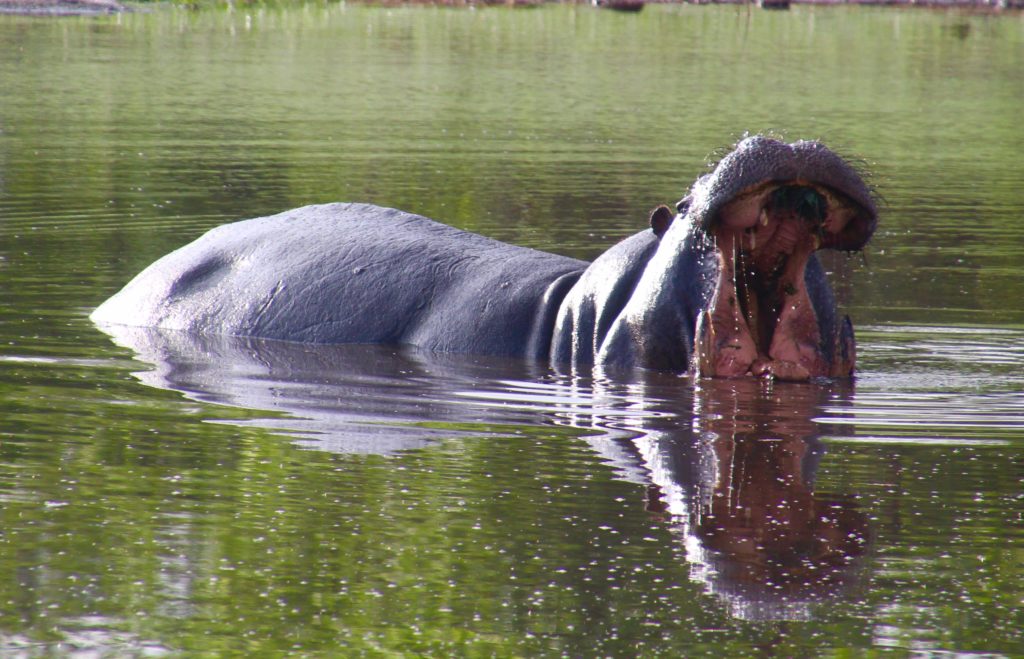
“Never trust a hippo,” they say.
Here, you really get to appreciate the full circle of life. From the living, to the dead, as well as the breakdown process of decay. Everyone is hard at work surviving.
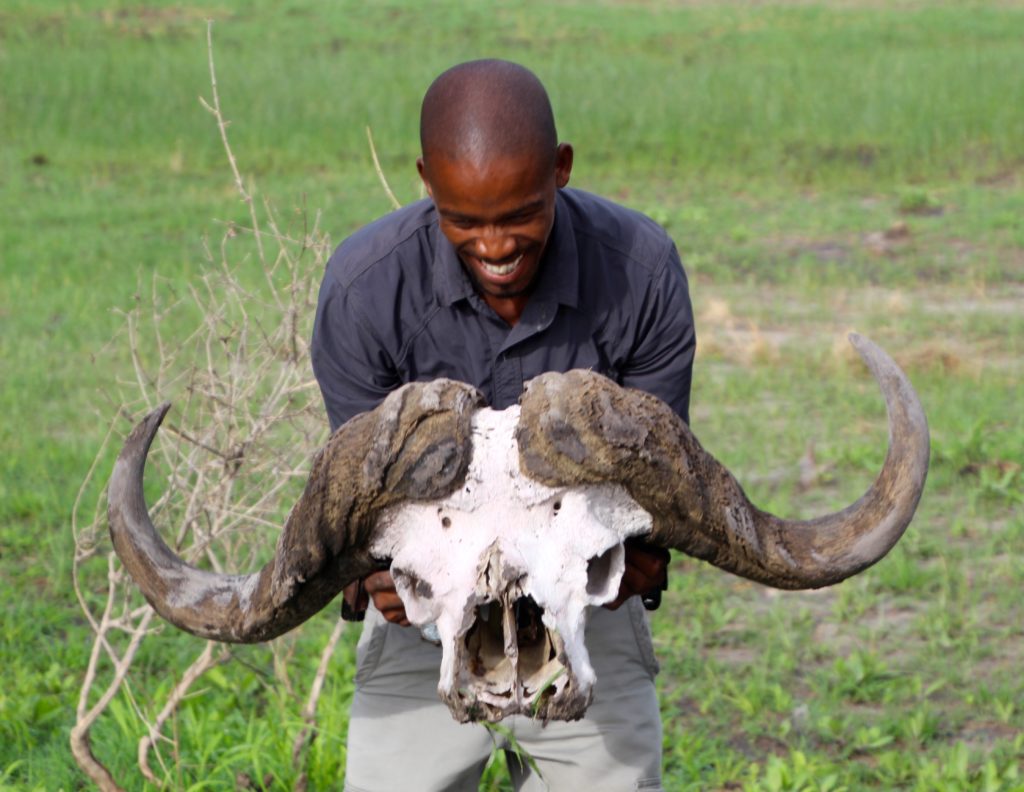
Tops holds up a Cape Buffalo skull. This was a female which you can tell by looking at the helmeted cap on the head. Males have larger more fused plates which help them in combat.
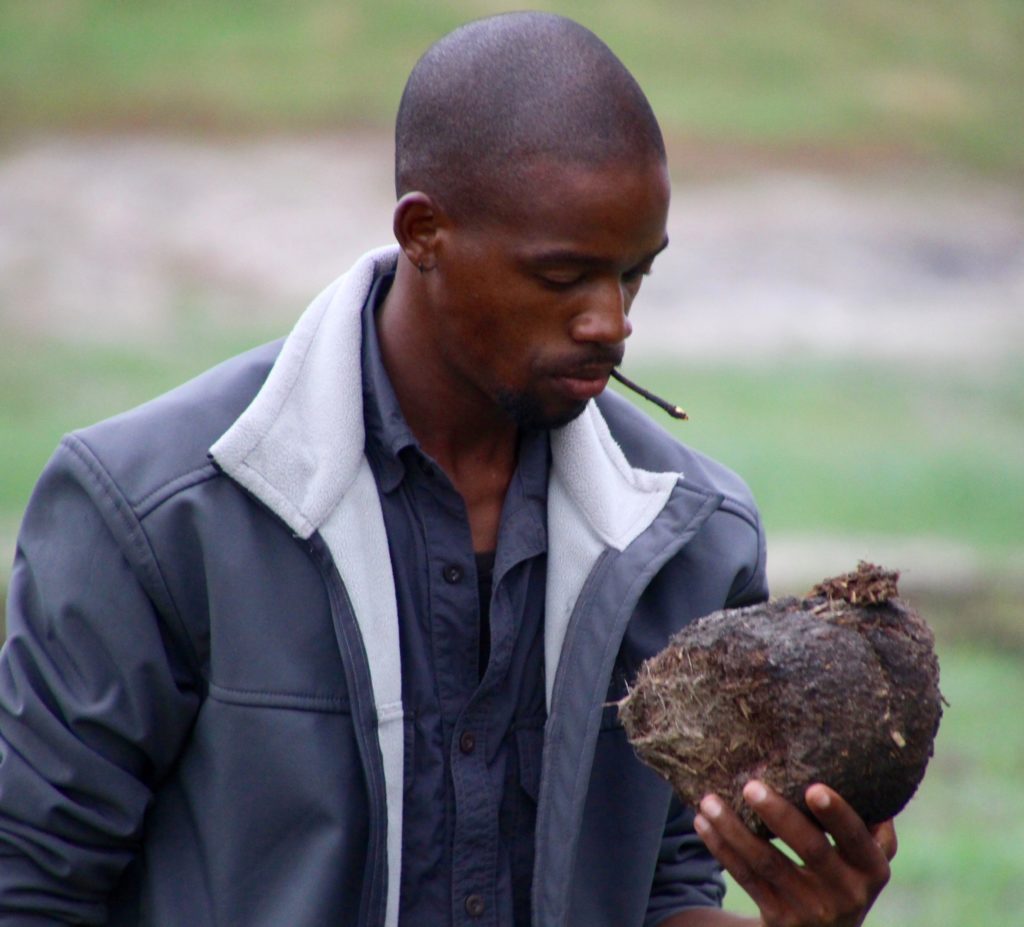
Tops explains to us the importance of elephant dung in the ecosystem.
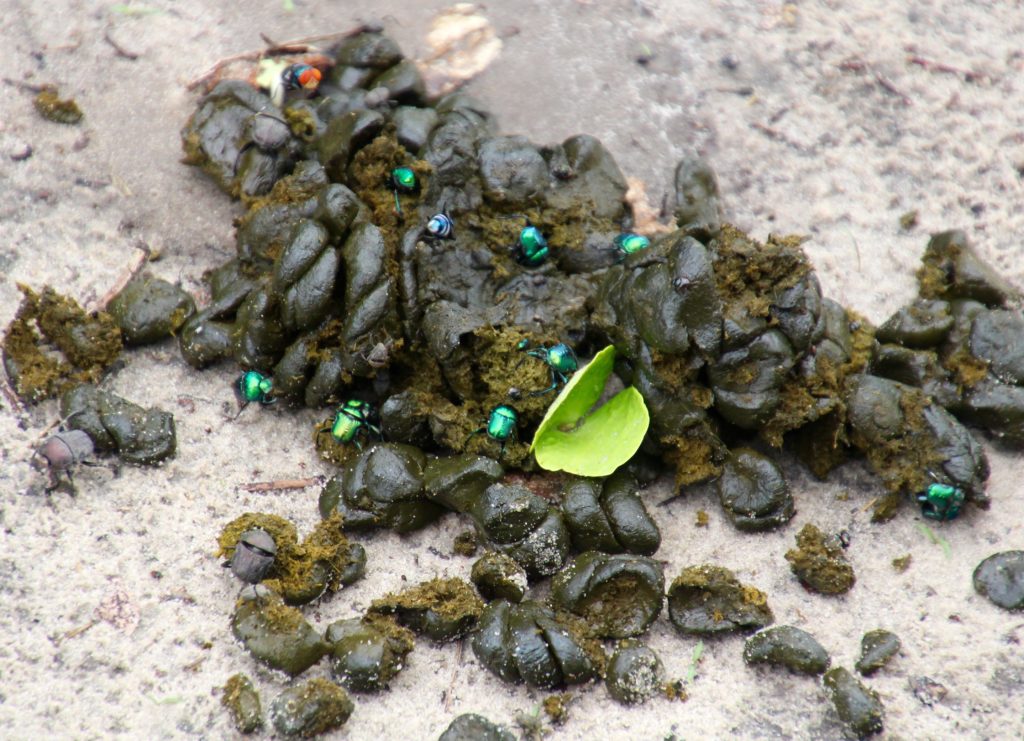
Dung beetles ready for action.
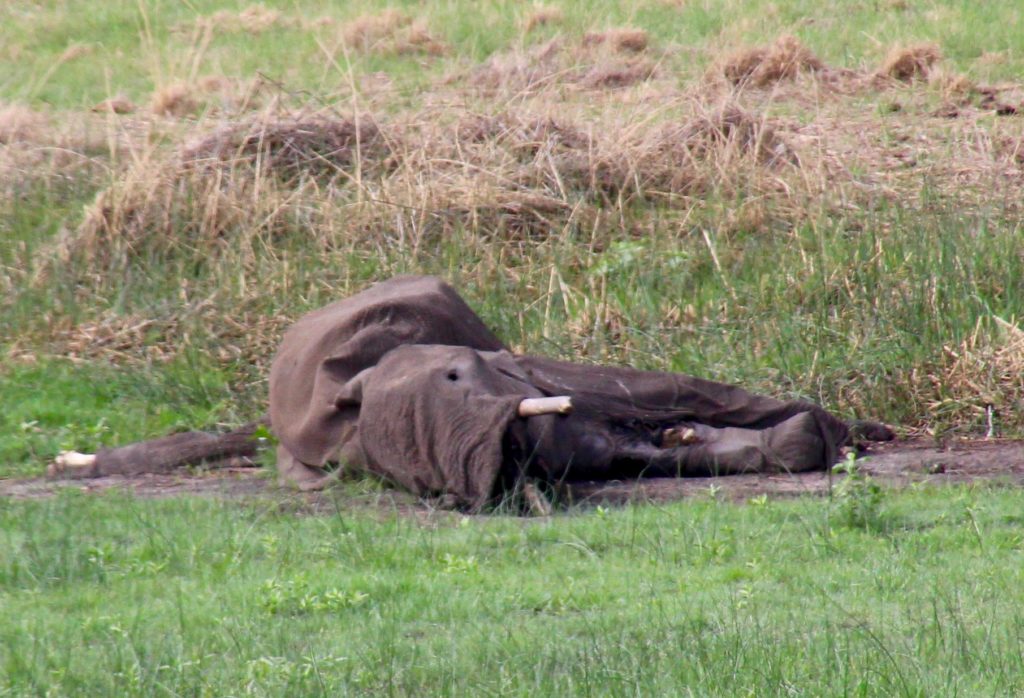
Skin of an elephant. This one probably died naturally. Signs of poaching involve removal of the tusks and Botswana has a shoot-to-kill policy against anyone suspected of doing so.
One sign that decay is close by, is that of the Scavenger of Death. The Vulture.
Vultures are not known to kill their own prey. Instead, they wait near the scene of the crime for their chance to gorge. If you’re out driving and spot vultures circling on the horizon, there is a sure chance you’ll find something exciting if you get close.
Perhaps a lion has just made a kill? Or a pair of cheetahs has finished feasting on a zebra?
One day, we saw vultures circling around a tree, so we decided to investigate.
As we got closer to the tree, we noticed many of the vultures were sitting in its branches staring at the pond below.
Then, we saw it.
A dead hippo in the water!
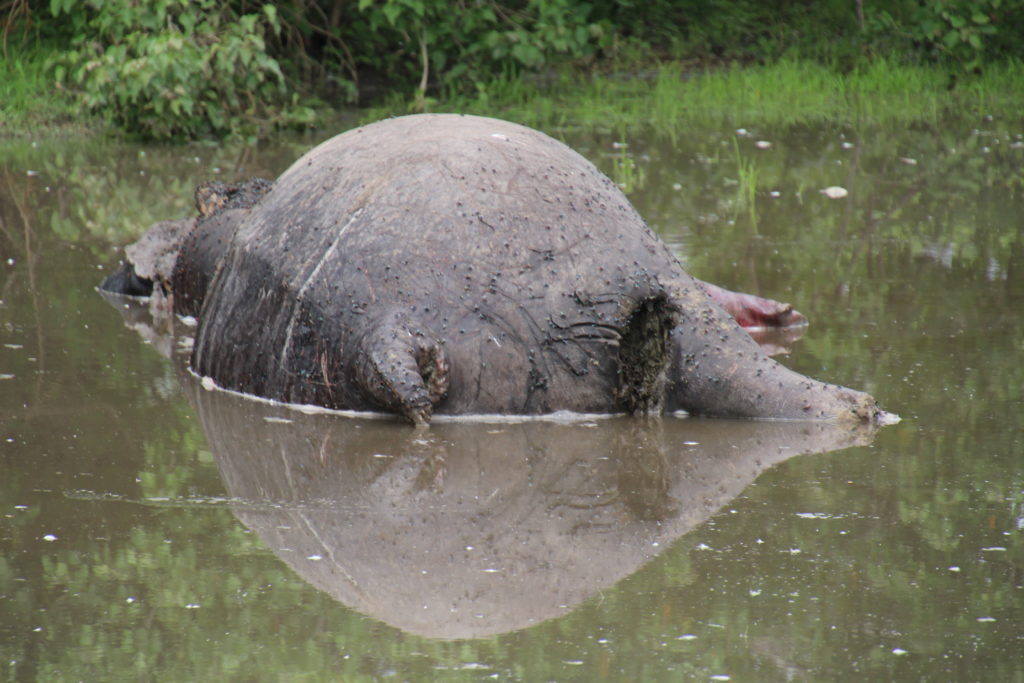
Trying to get a better view, we decided to circle around the pond. Attempting to cross a water way in the rainy season is always a risk. Depending on the soil type, the ground can turn into sticky mud within minutes.
Our effort to get closer immediately failed. The mud pulled us in.
Tops revved the engine trying to force the Land Rover free. We didn’t budge. The mud was too slippery and grabbed us, pulling us in further.
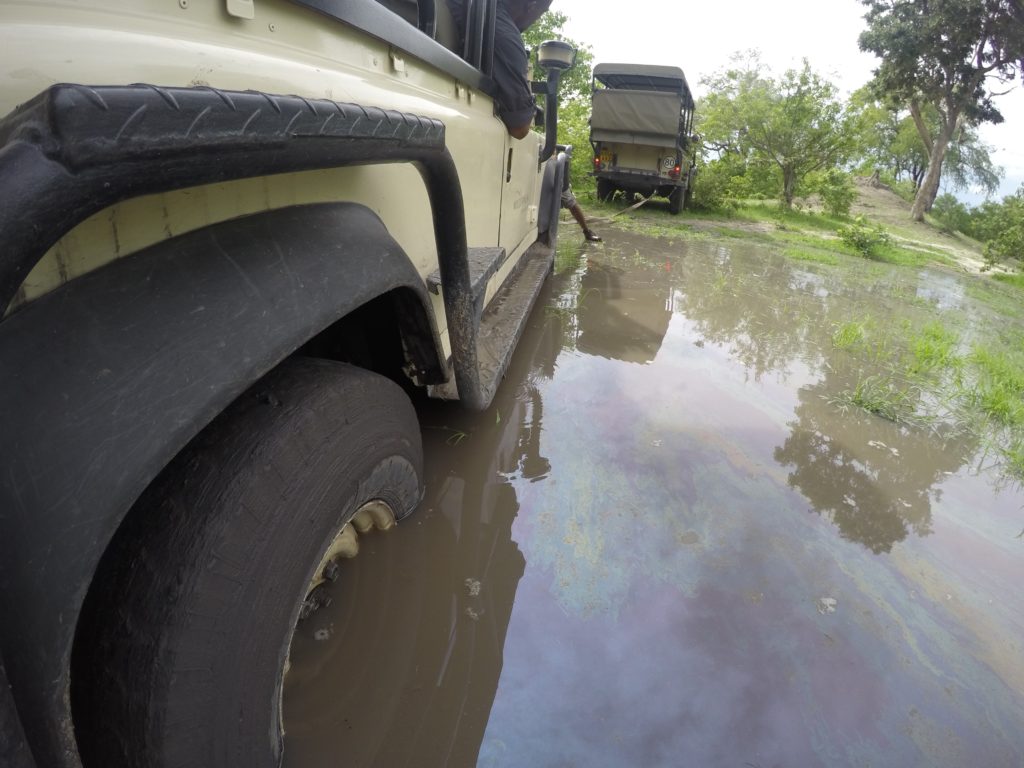
There was no escape.
That’s when we knew we were really seriously stuck. At first, I tried to play calm. Stuck? Its part of the Safari experience! … right?!
Then my mind started working. Vultures. Dead hippo just lying there. Nowhere to go.
I couldn’t help think the lions would be there soon. We were goners.
Tops radioed for help but we were more than an hour outside of camp.
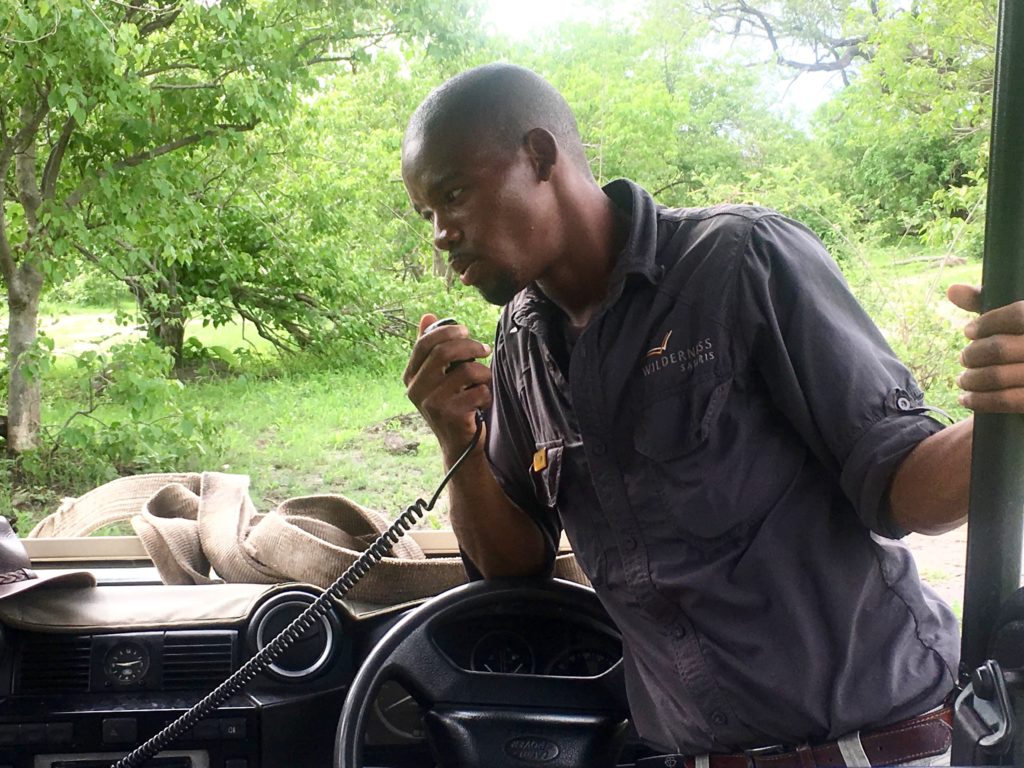
As we waited, he cheerily offered us all coffee and biscuits. Coffee? Biscuits?? How can we eat right now?! WE MIGHT DIE!
“But Allison, if this is your last meal, you might as well enjoy it!” Eva said as she crawled to the back of the rover and lit up a cigarette.
“Mom? Are you scared?” I asked.
“No! We are fine,” she smiled. Calm. Too calm, I thought. A sure sign of denial regarding the imminent doom we were facing.
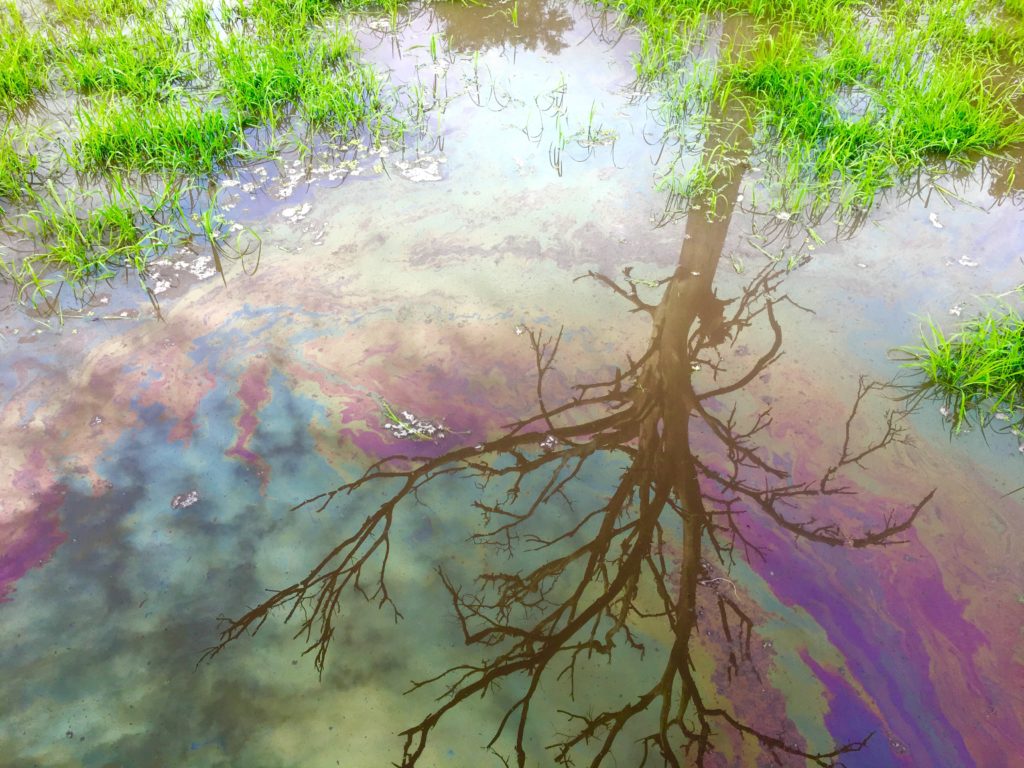
I felt a mix of high anxiety and thrilling adventure while my mind played thoughts of lion attack. I also knew I could trust our guide, Tops. He grew up here. Surely getting stuck has happened before. Right!?
Tops distracted us with jokes and stories while we waited.
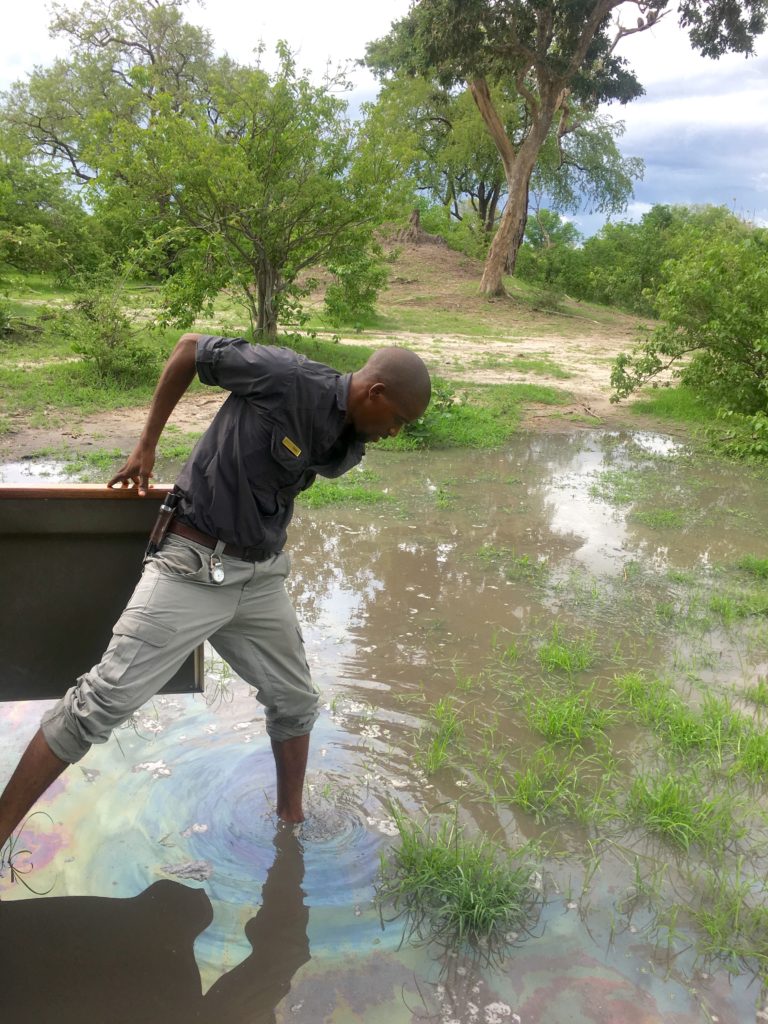
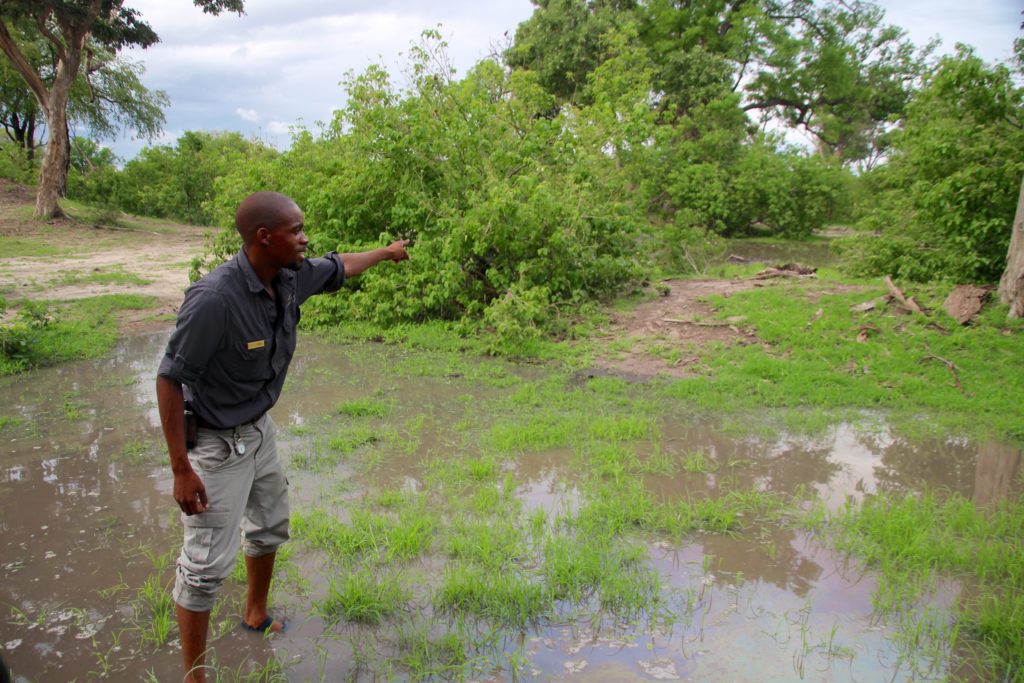
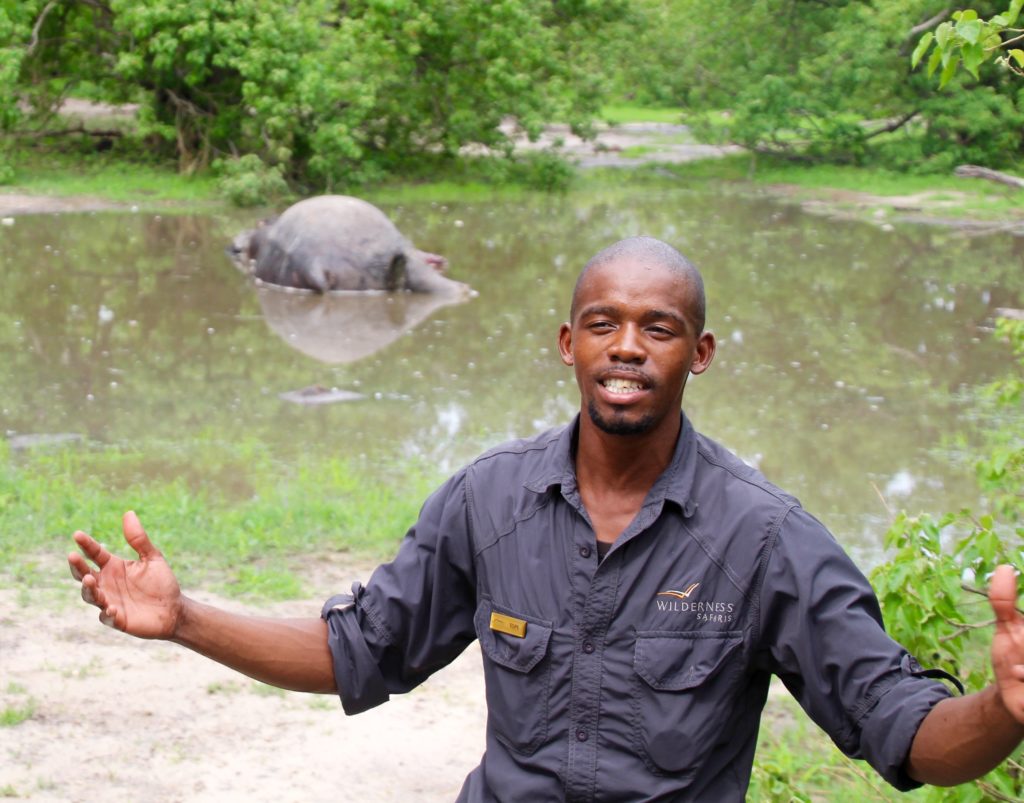
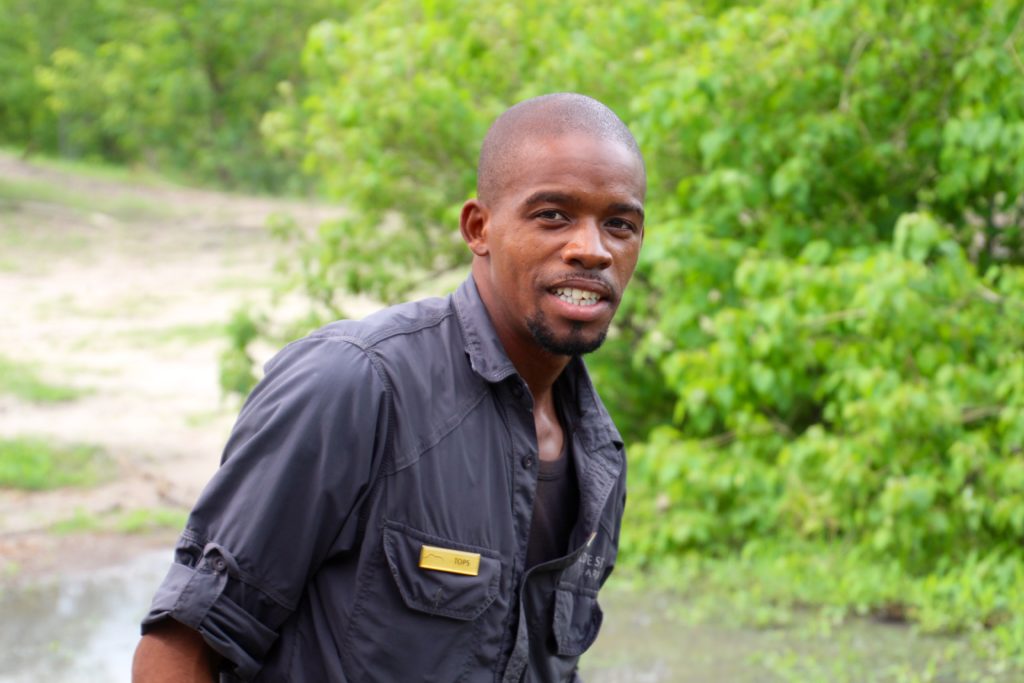
And waited.
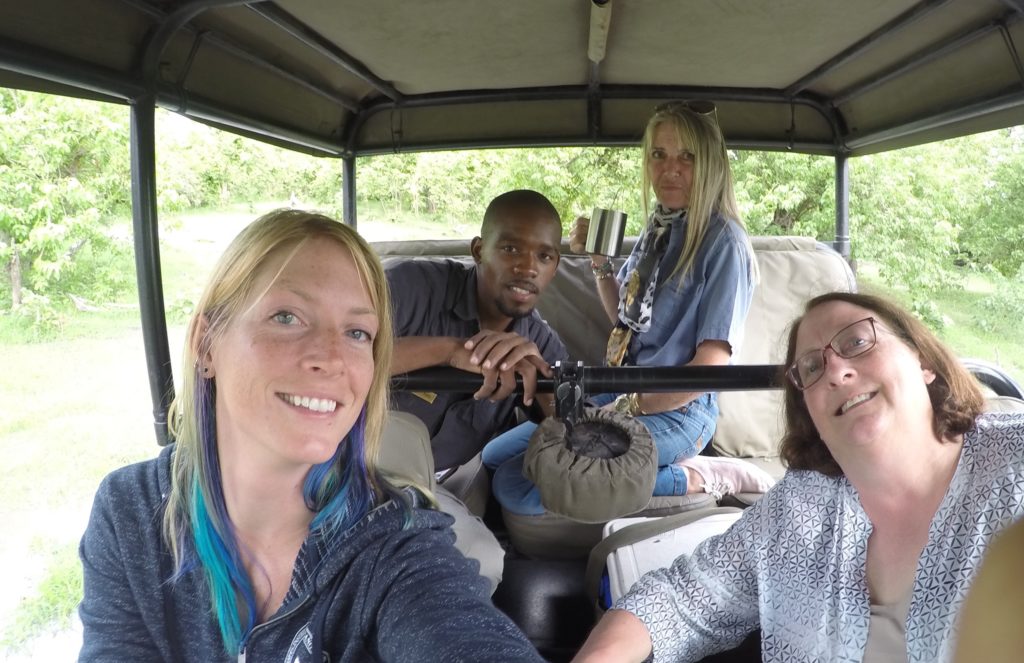
The team, enjoying our last meal.
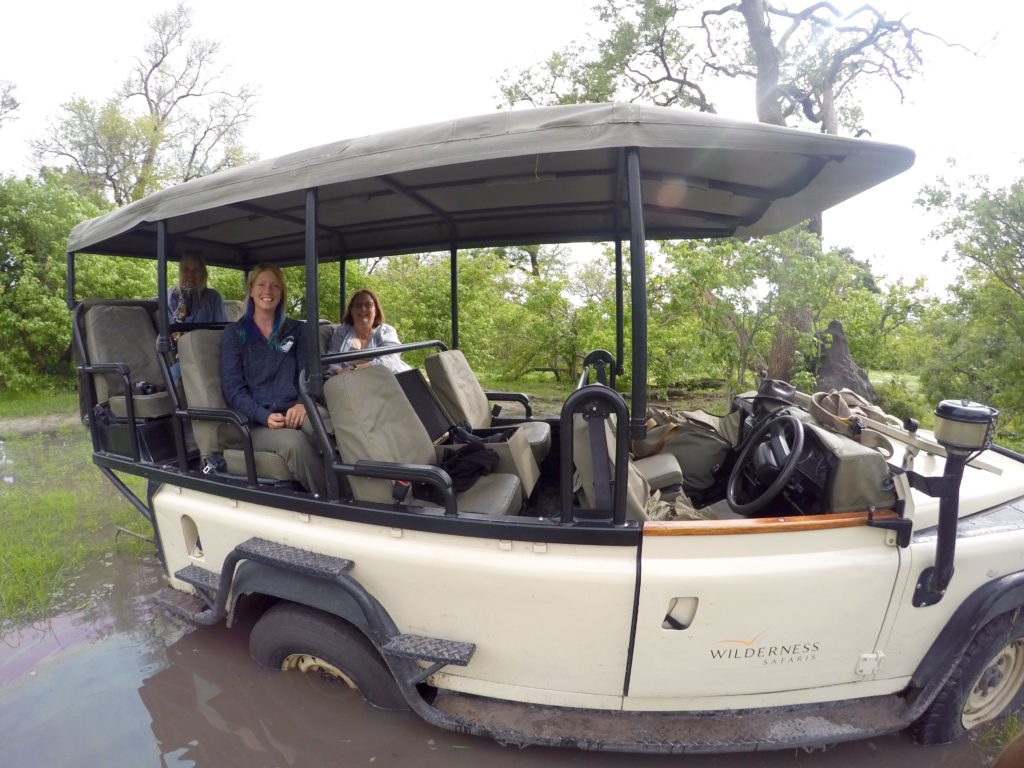
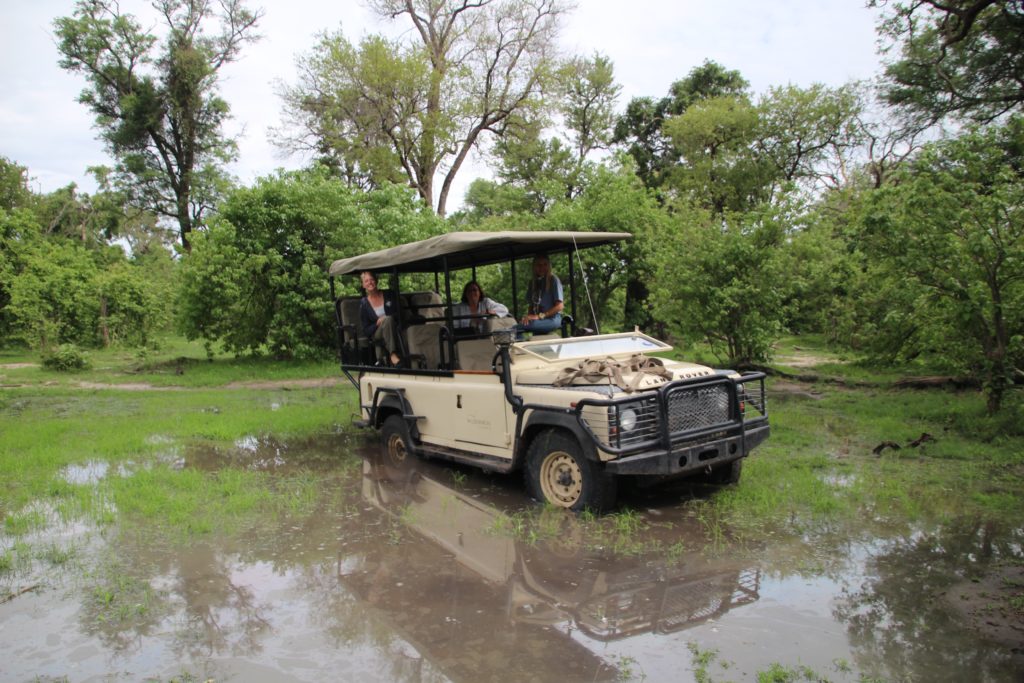
Finally, after an hour, our help arrived!
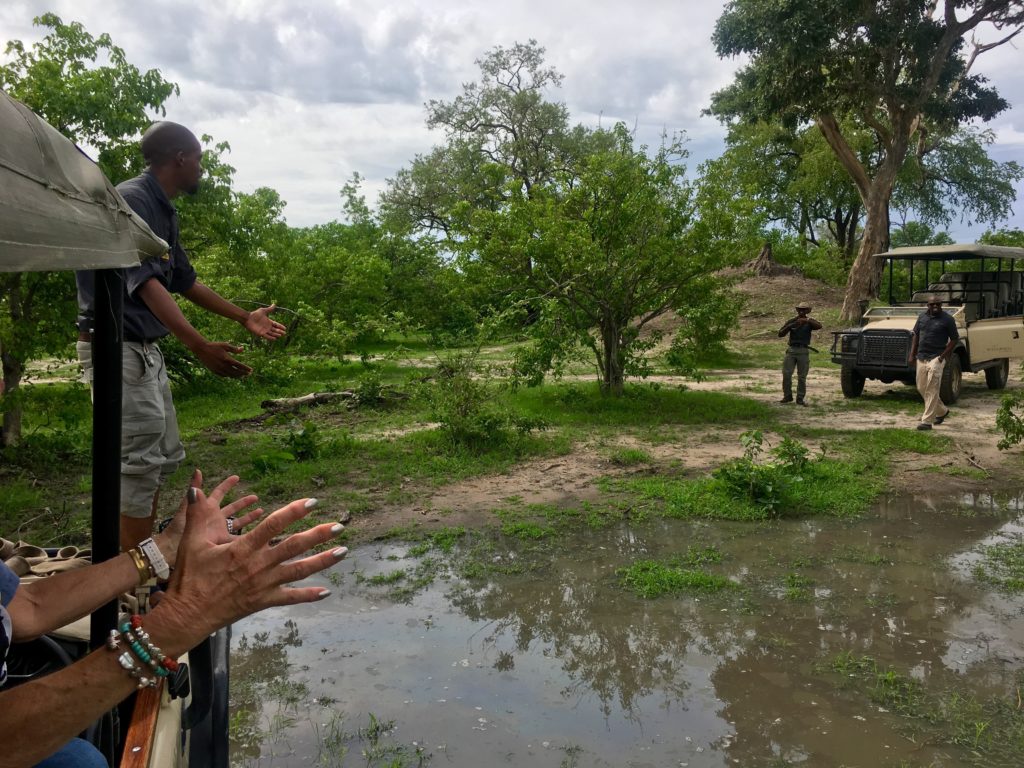
Pahlana and ST showed up with another vehicle and long tow straps.
After several attempts, a shovel, and lots of wood jammed under the tires, they eventually pulled us out and my nerves subsided.
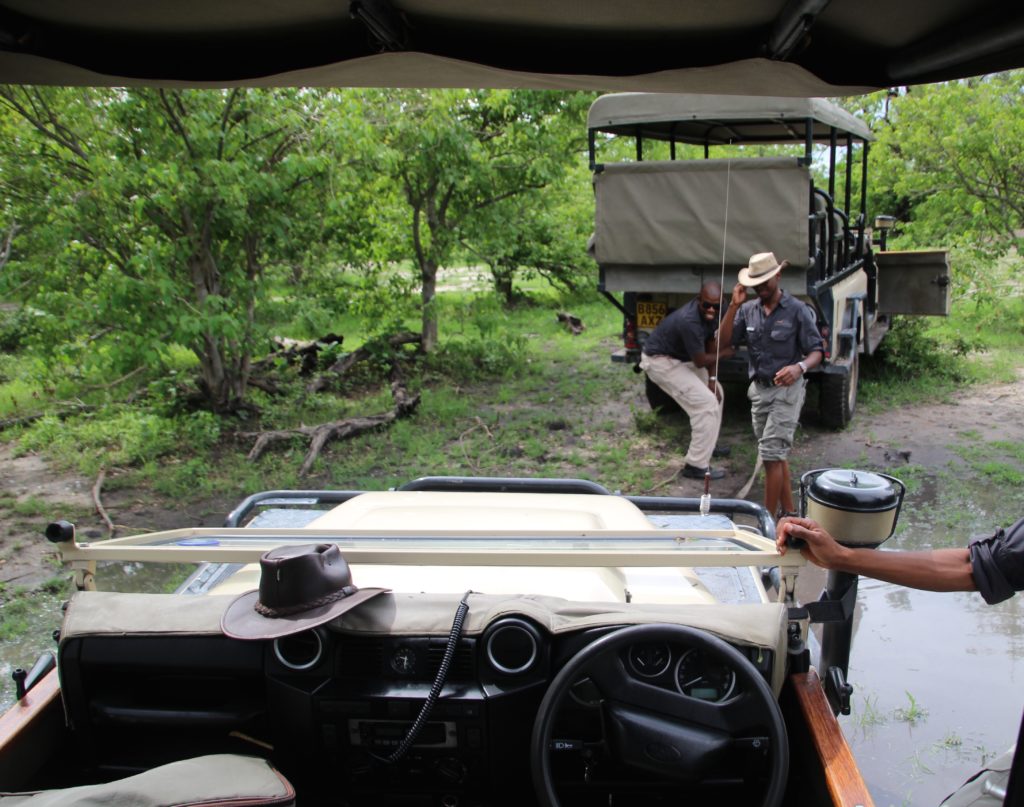
We circled around to get a better look at said hippo. That’s when we discovered it’s face had been chewed off, the entire body was bloated ready to explode, and we had luckily gotten stuck upwind from the wretched stench.
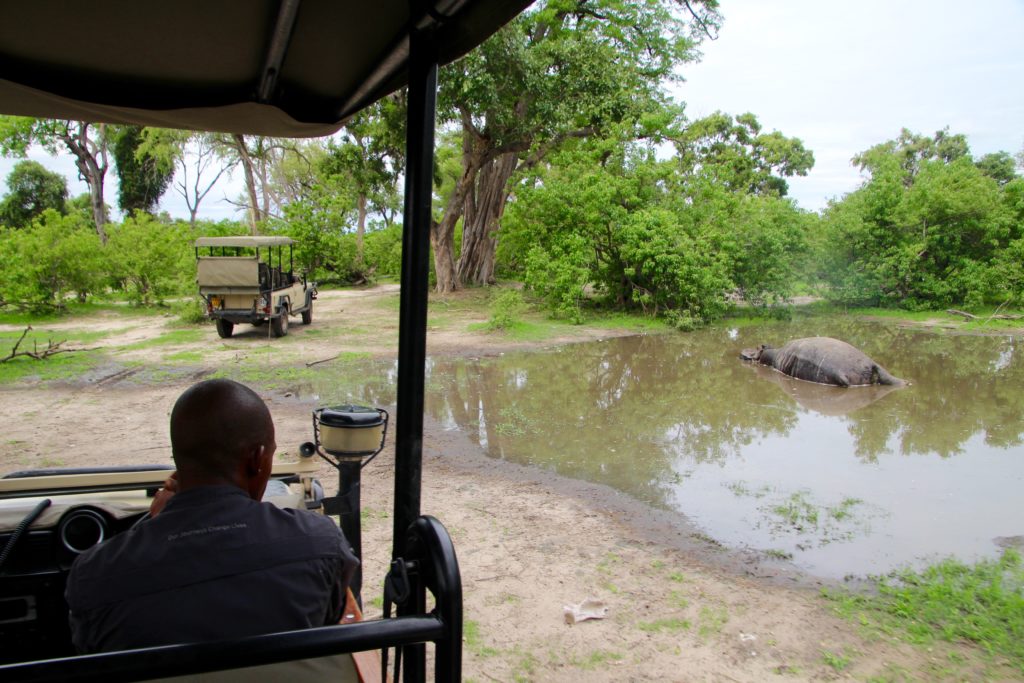
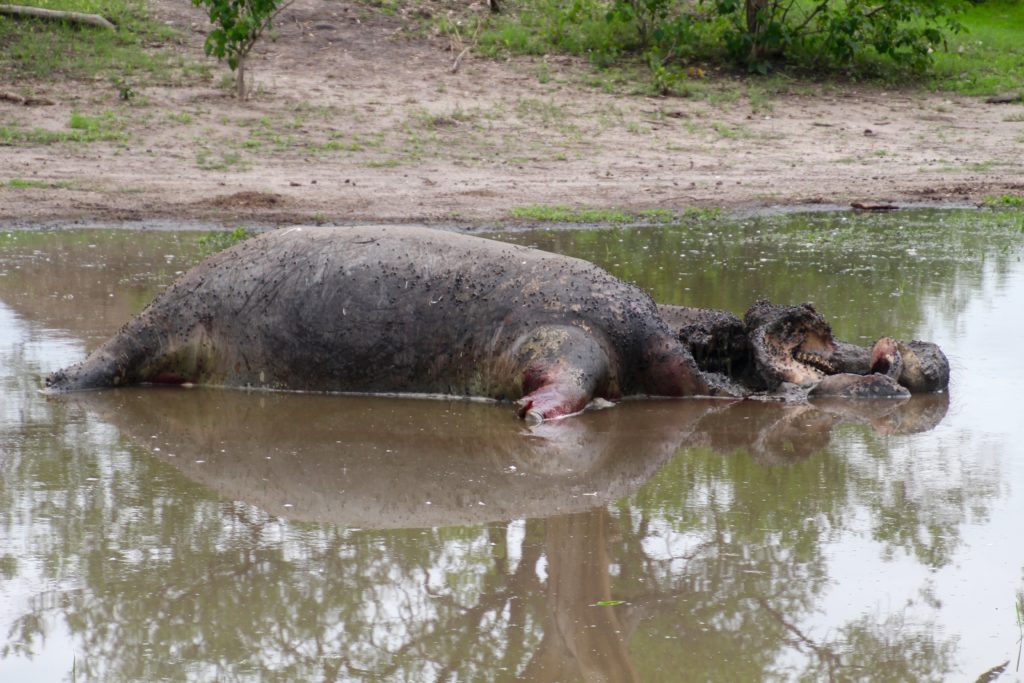
An adventure to remember for sure!
I definitely slept well that night.
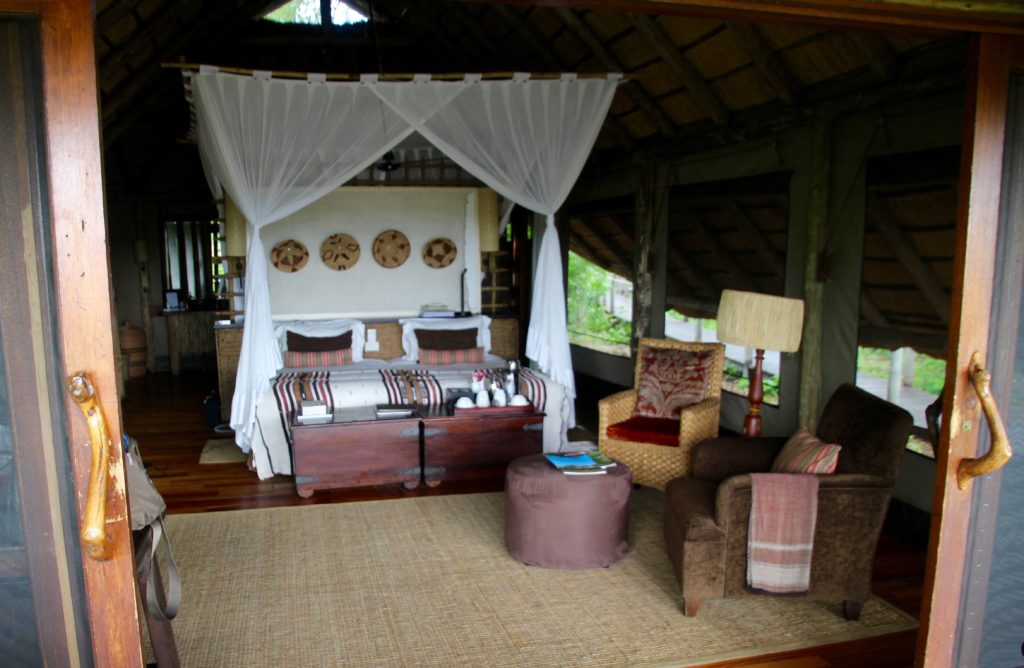
This post ends here. To keep reading, click here for part 3.
***
To get immediate updates the minute new posts go live, please subscribe to the newsletter in the field at the top of the site! And as always, if you know someone who may be inspired by the articles on Woman Scientist, please share it with your network!
Stay tuned for more stories of my adventures in Botswana and Zimbabwe….
If you missed the beginning of this journey, click here to start from the beginning.
*****
All information obtained through personal conversation with Wilderness Safari guides.
Photos by Allison Lee and Cynthia Cusick.
Share this: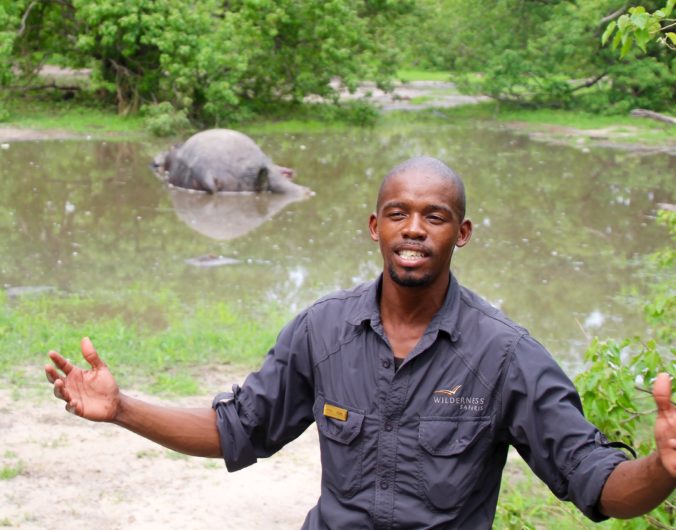
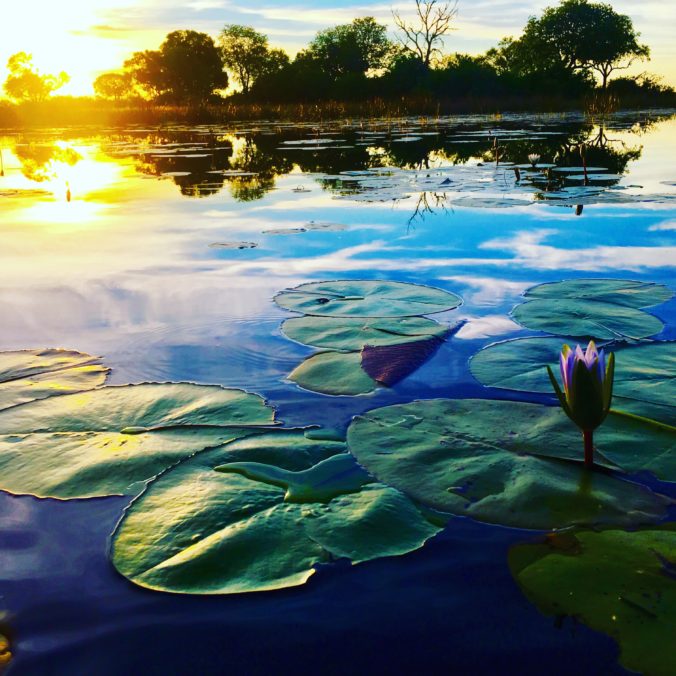
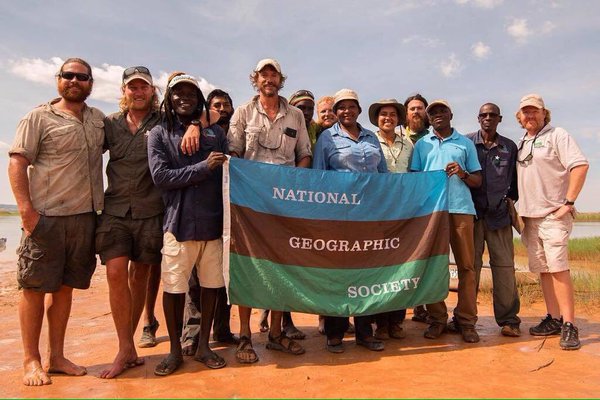
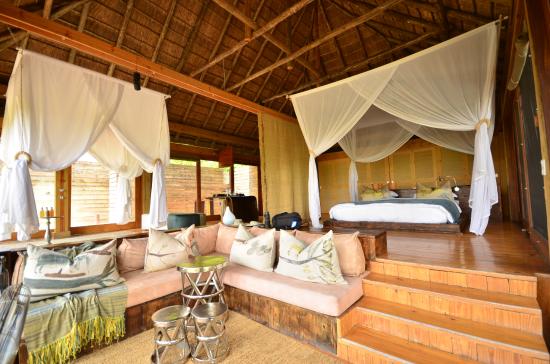
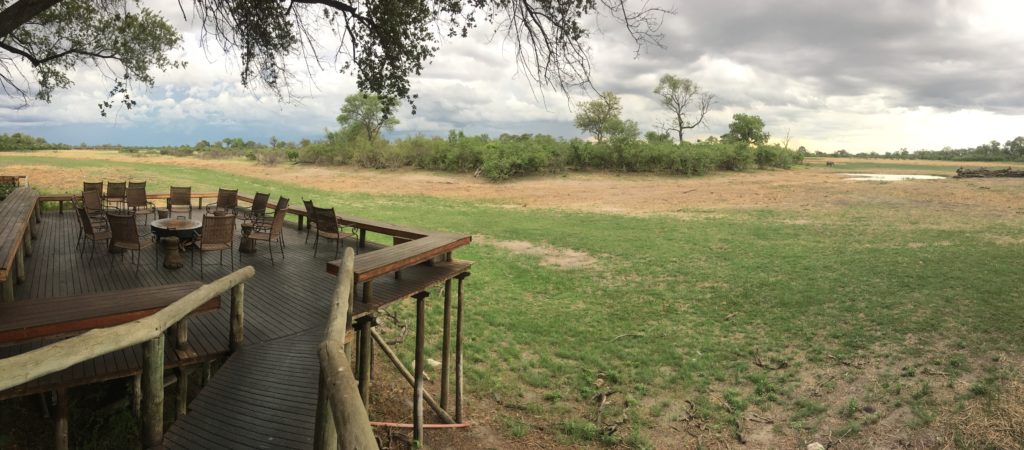
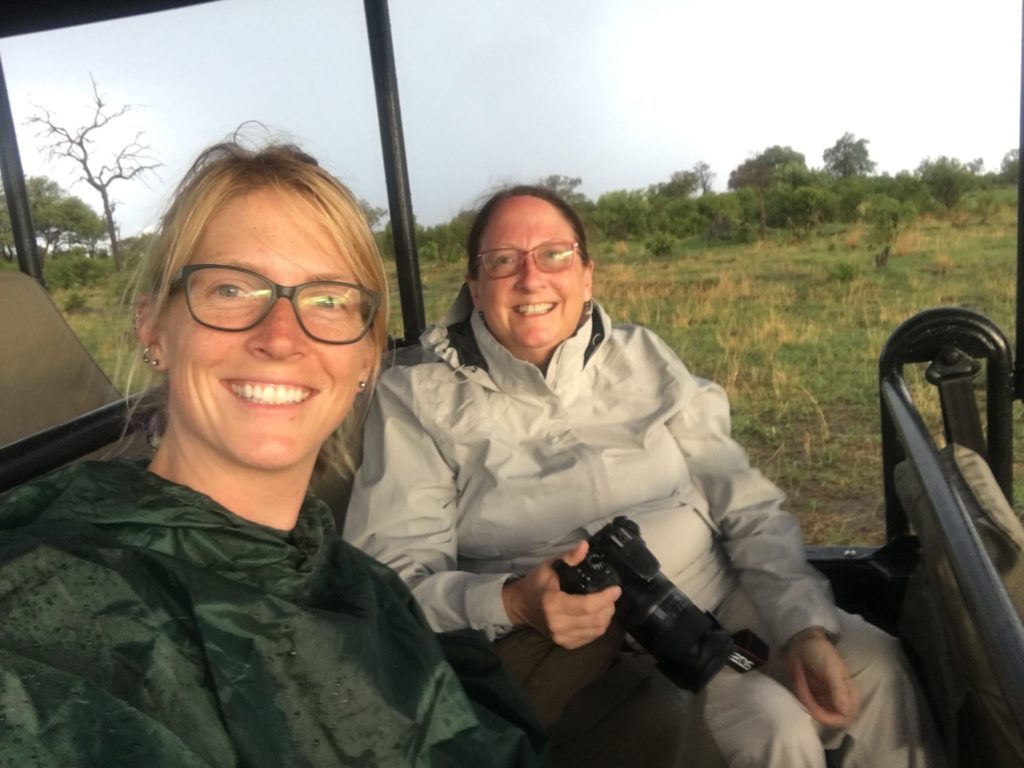
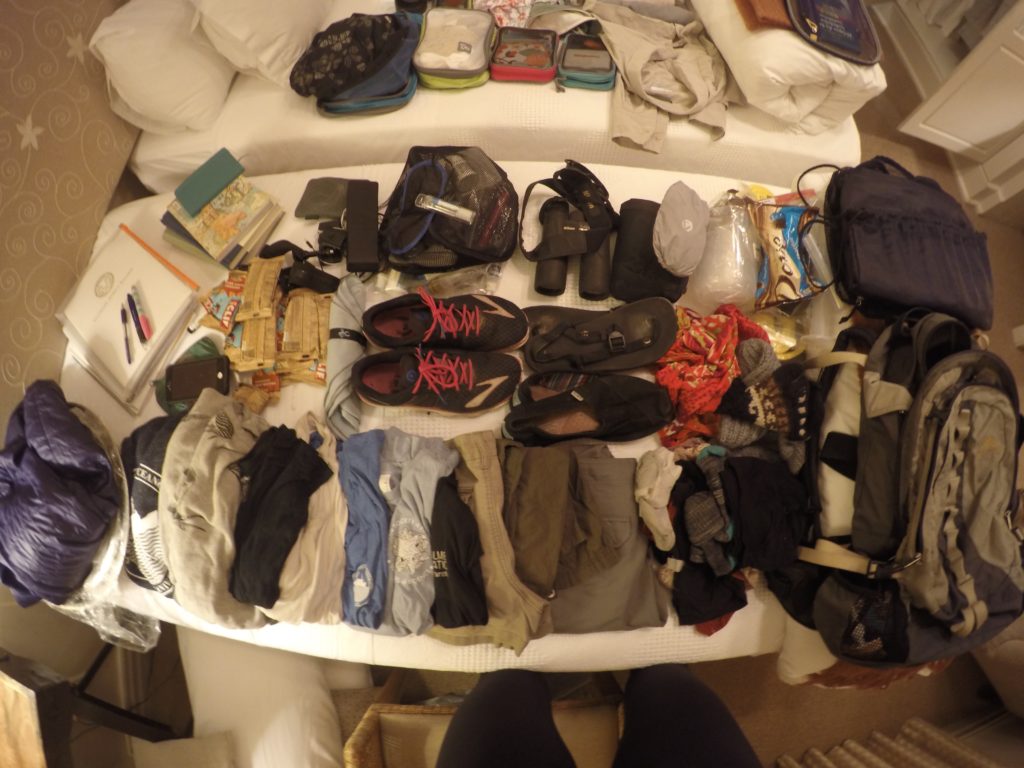






































Recent Comments